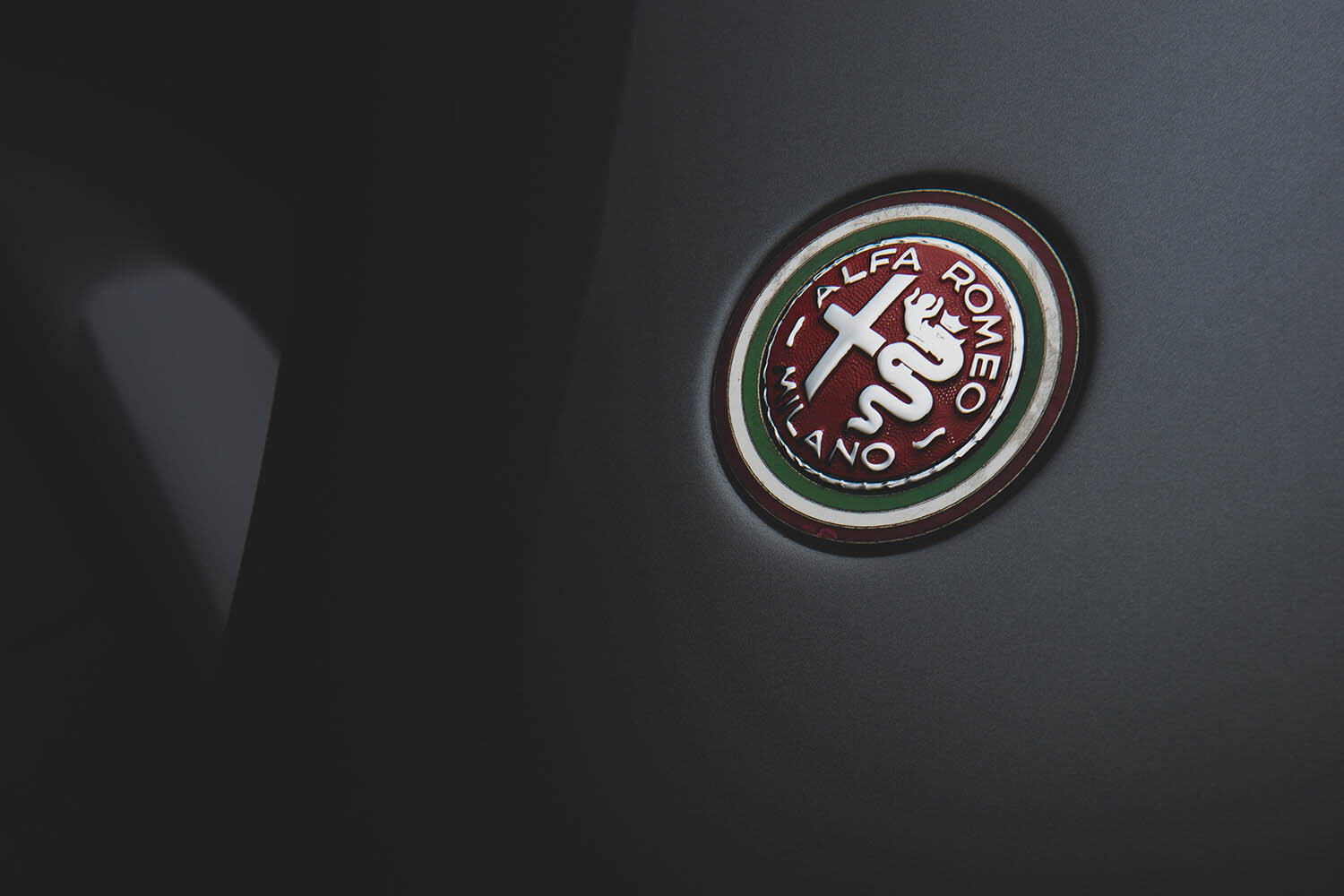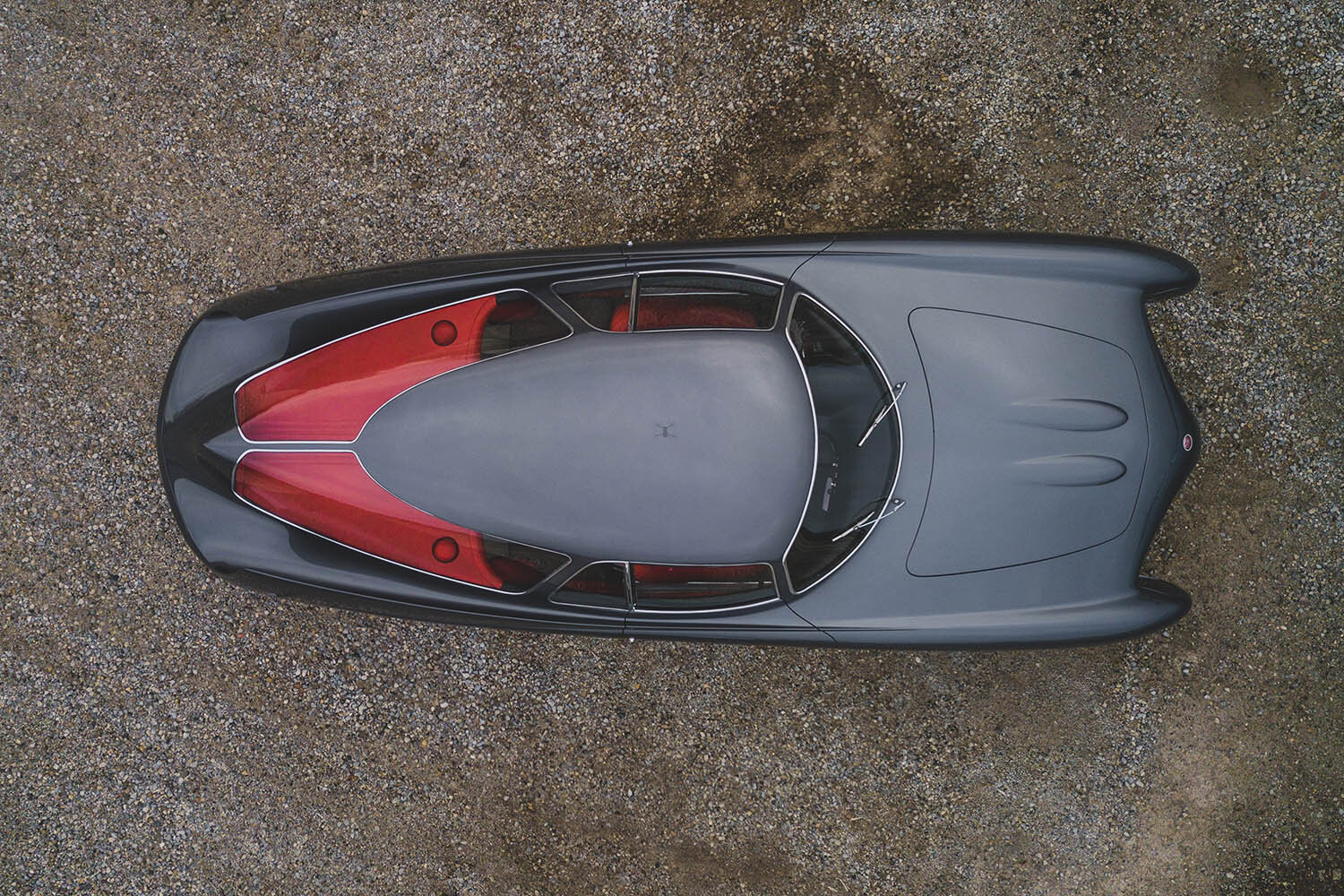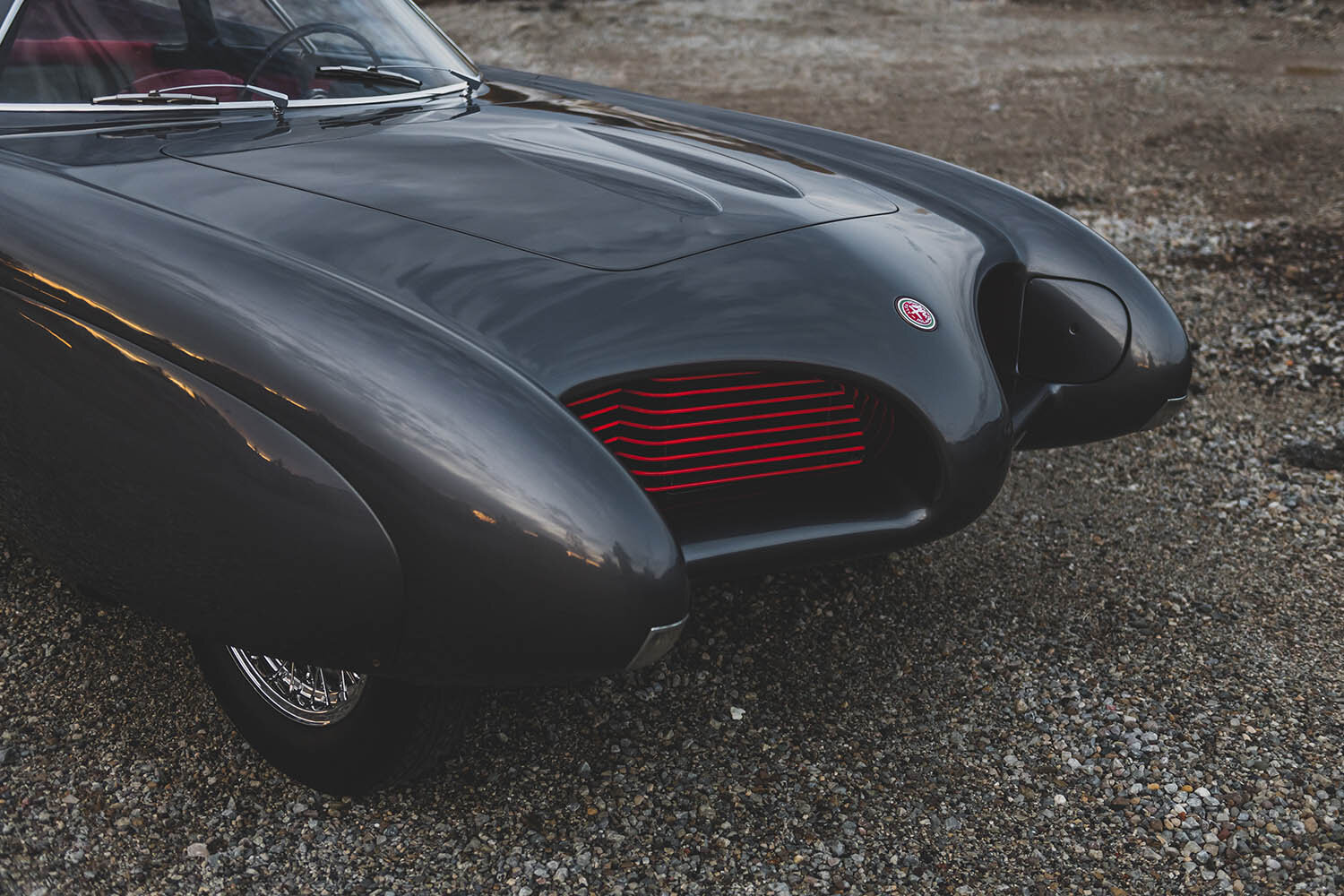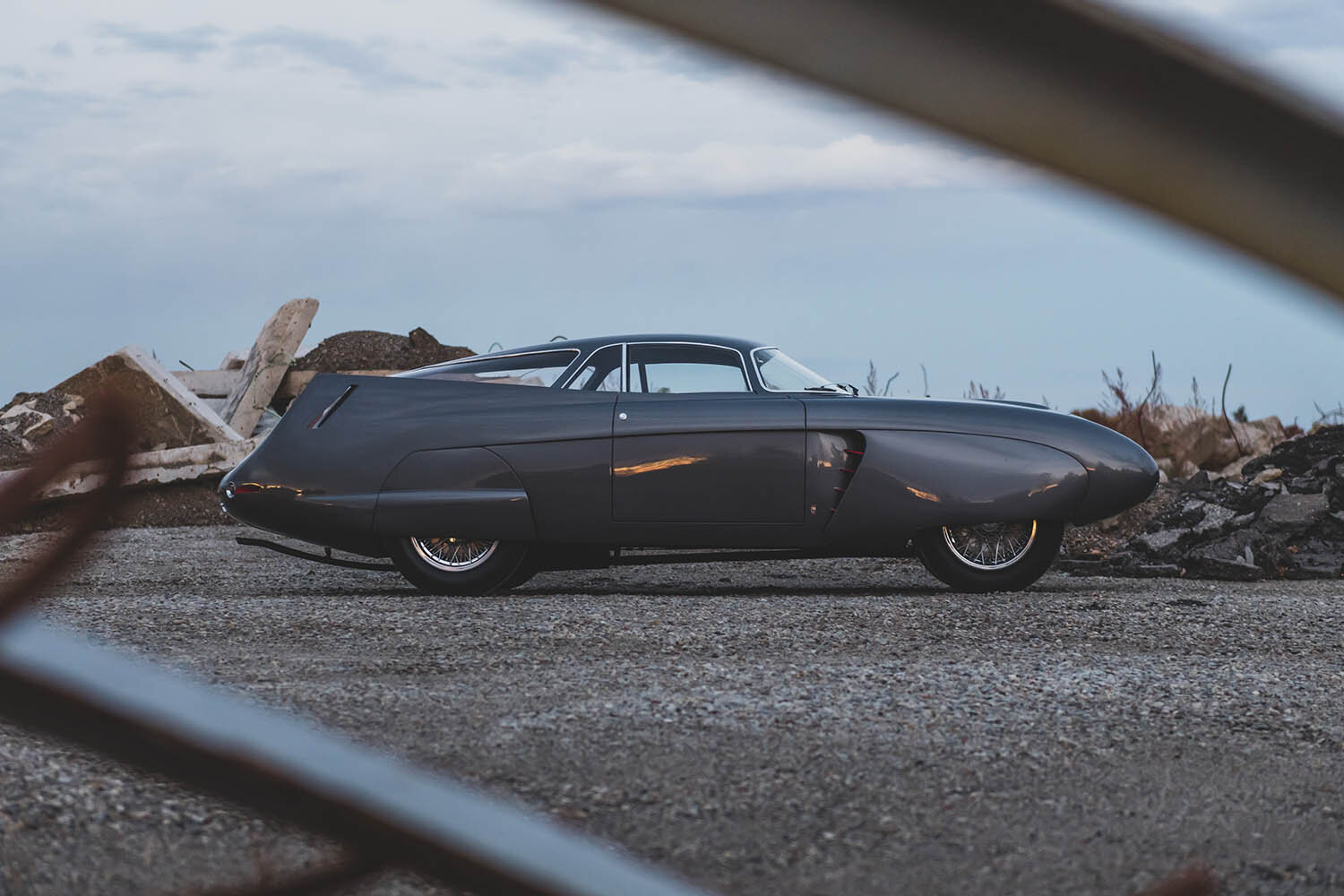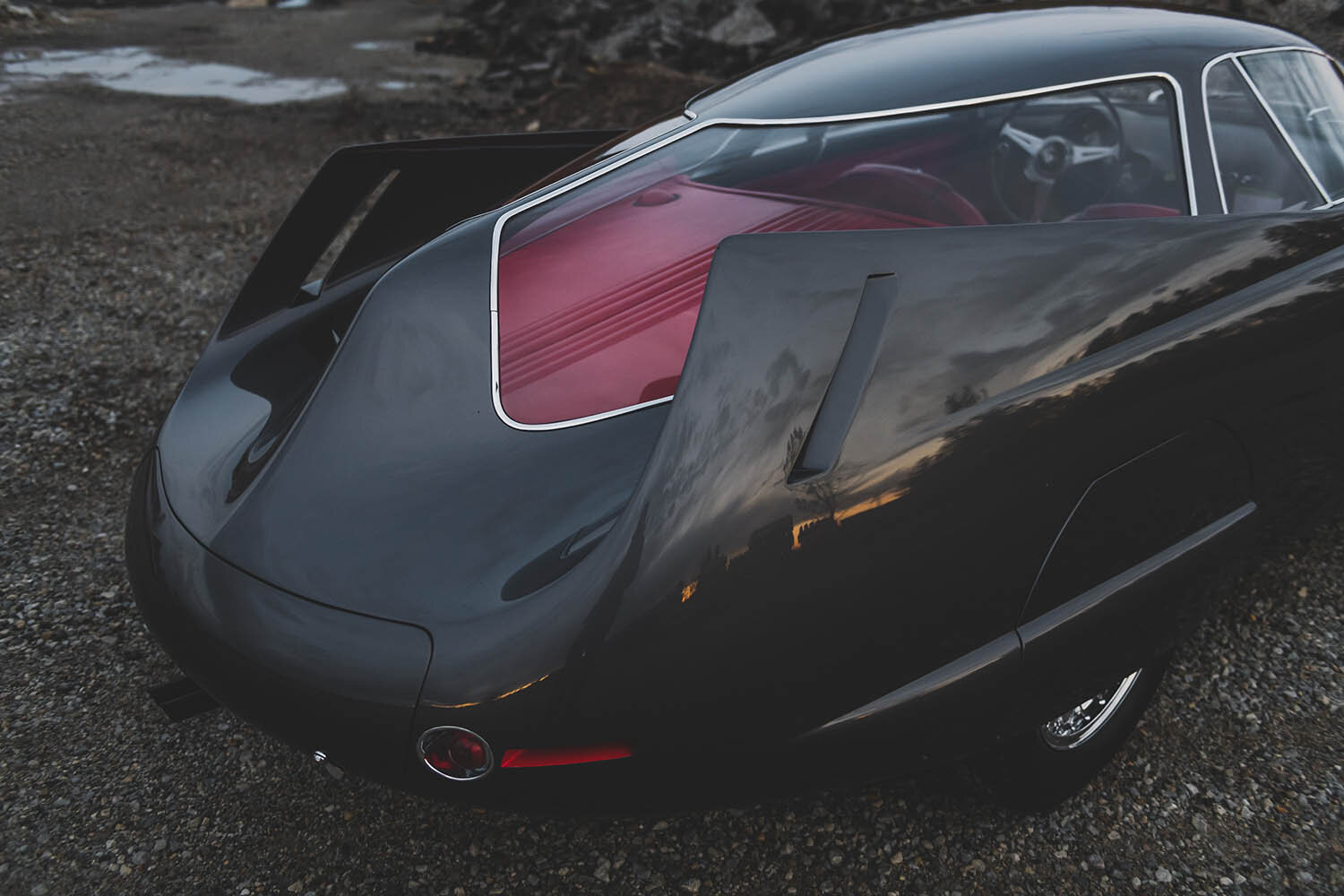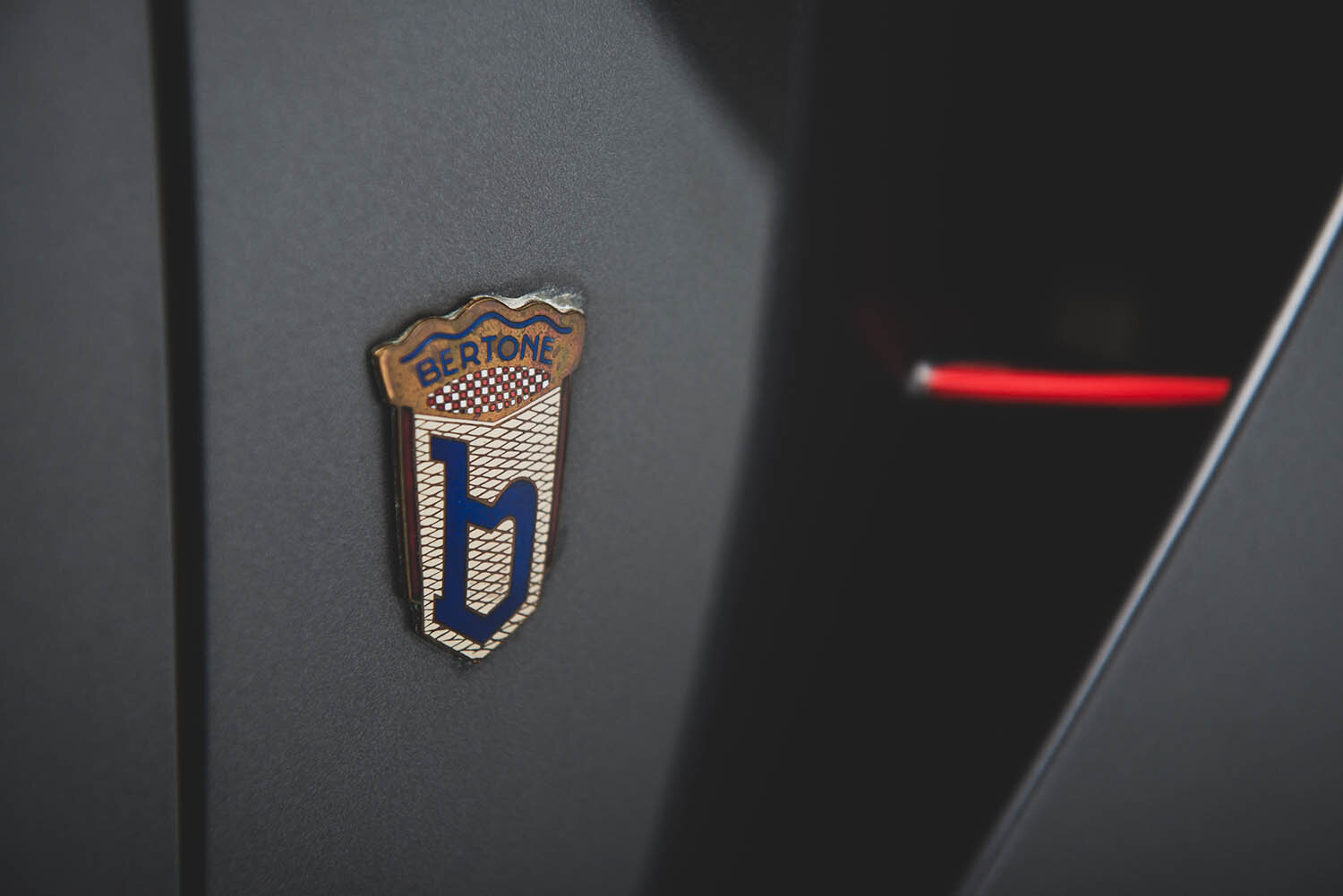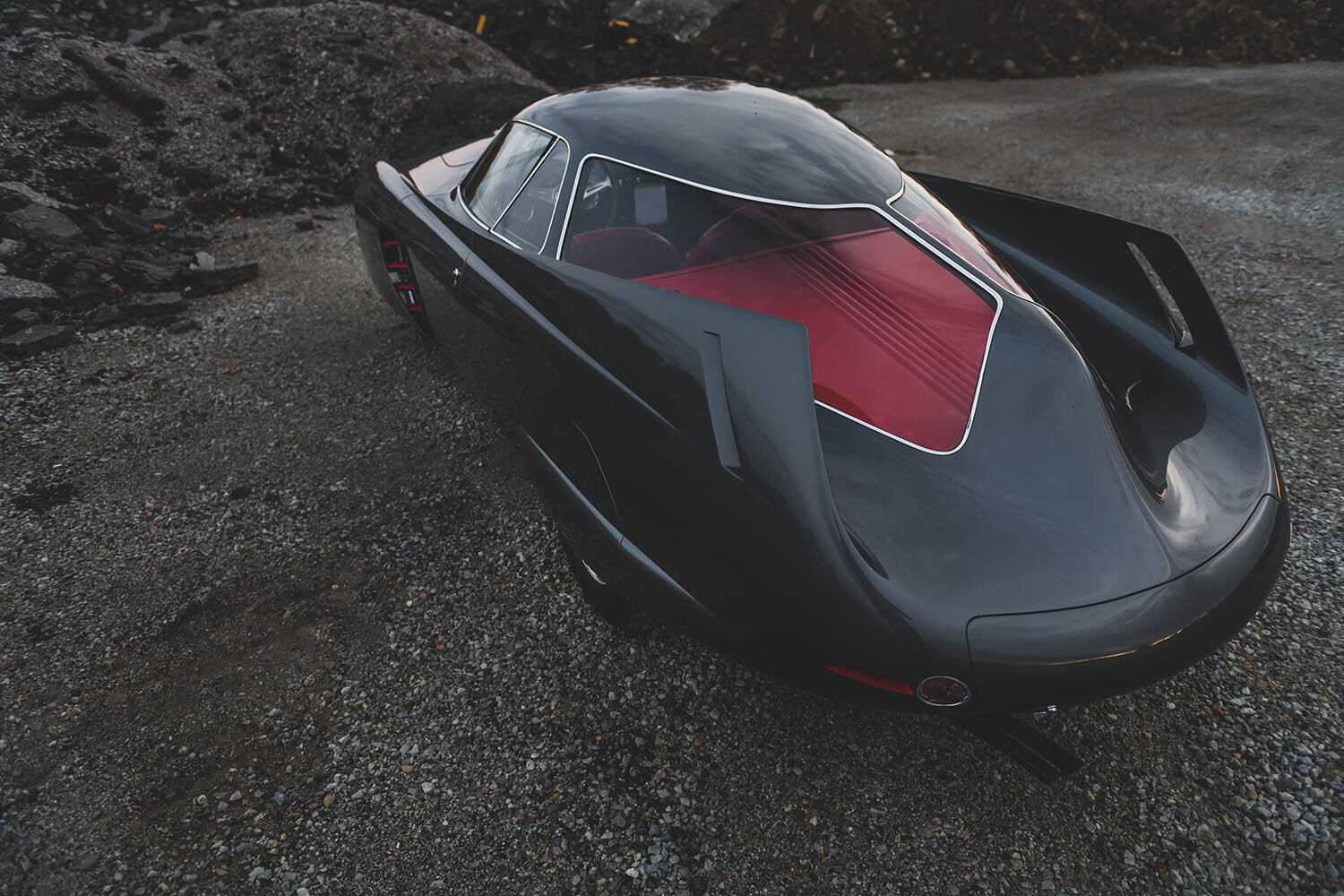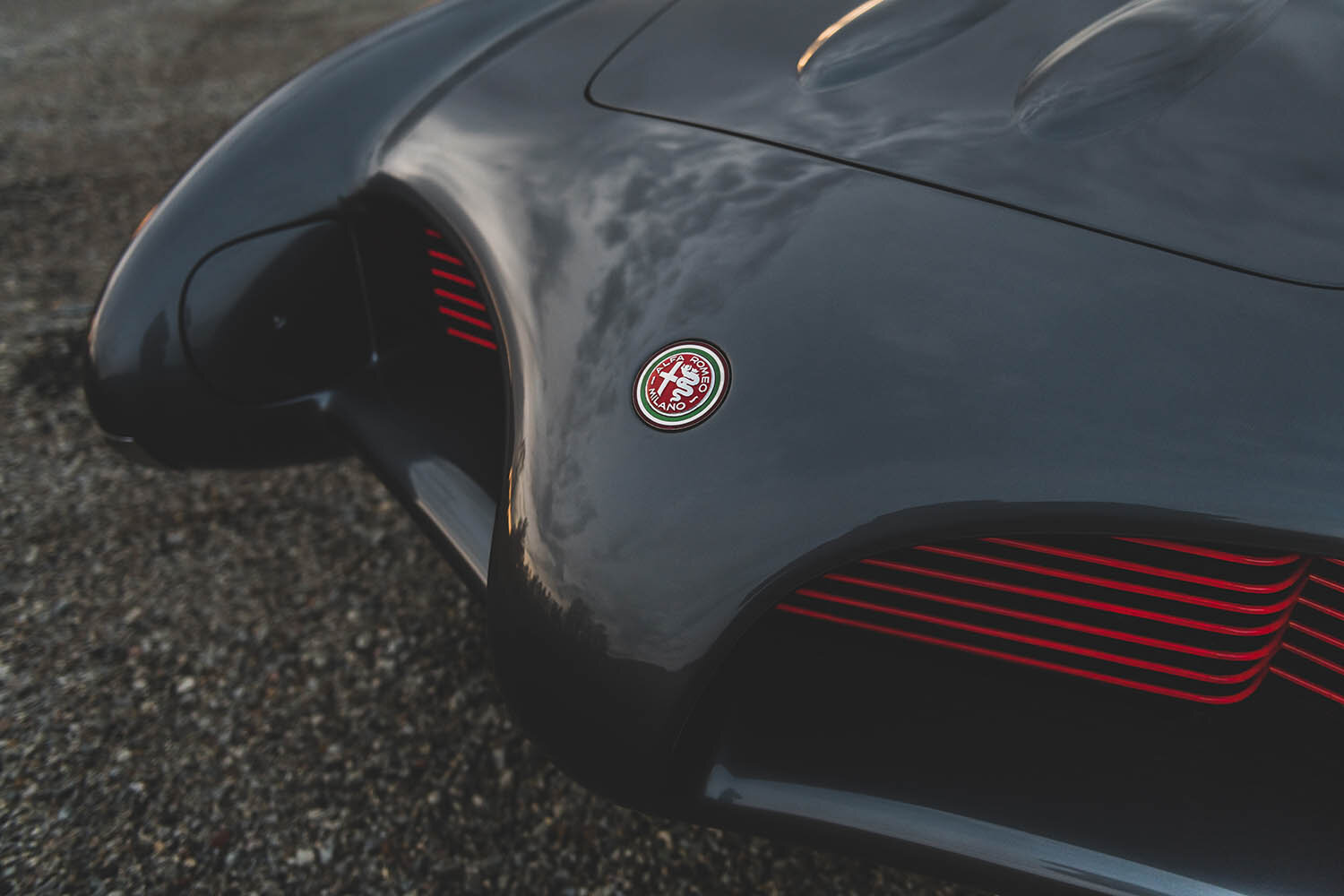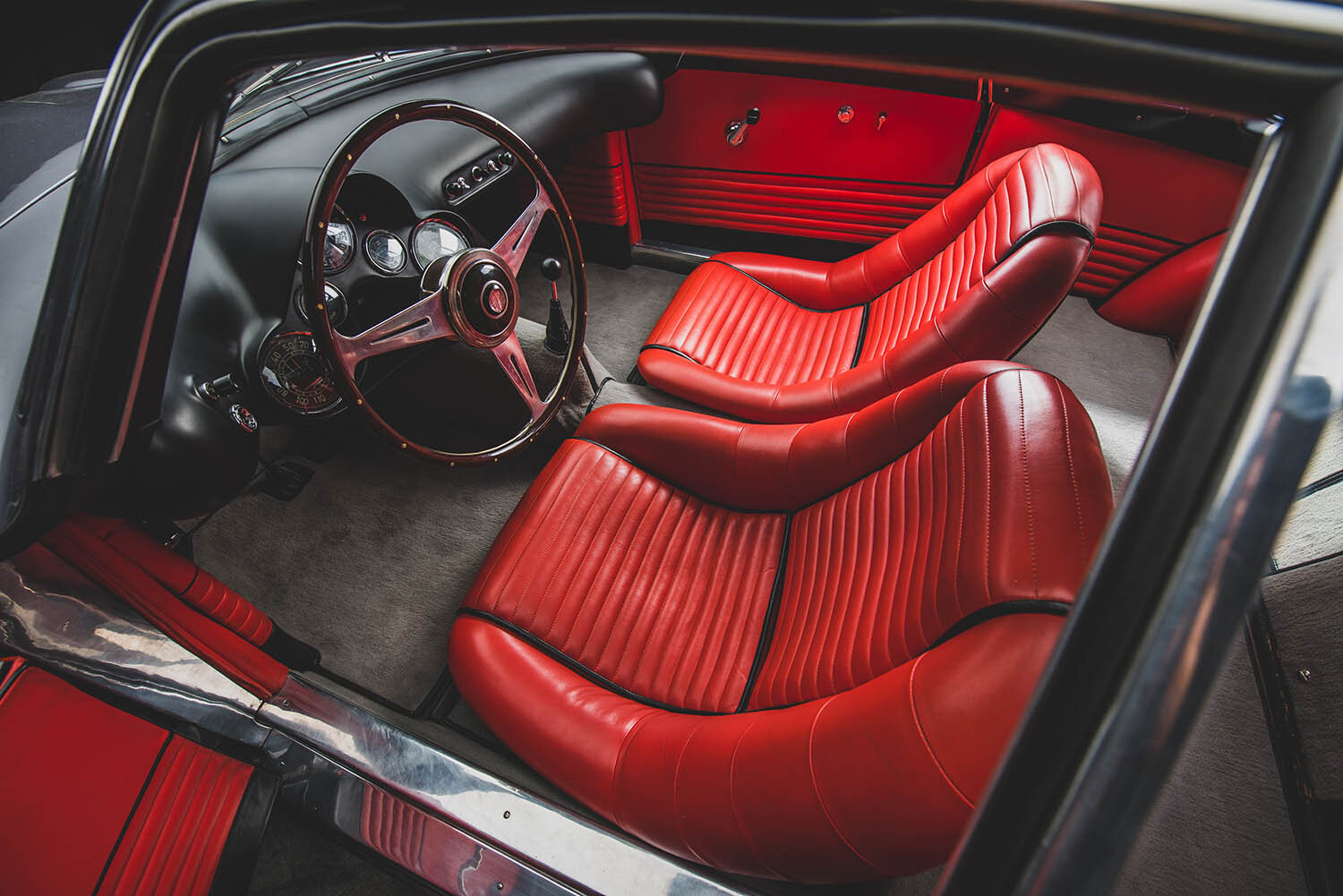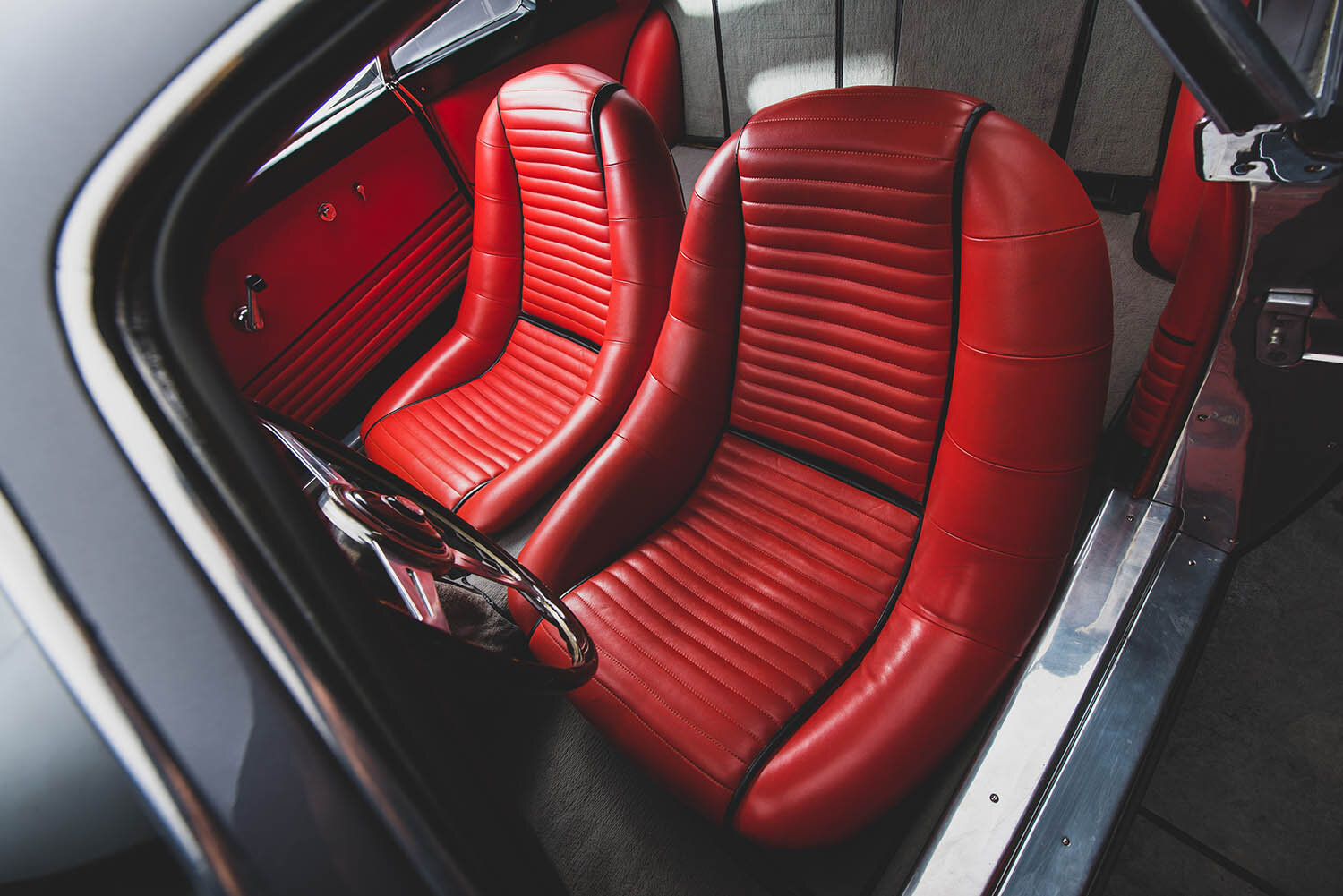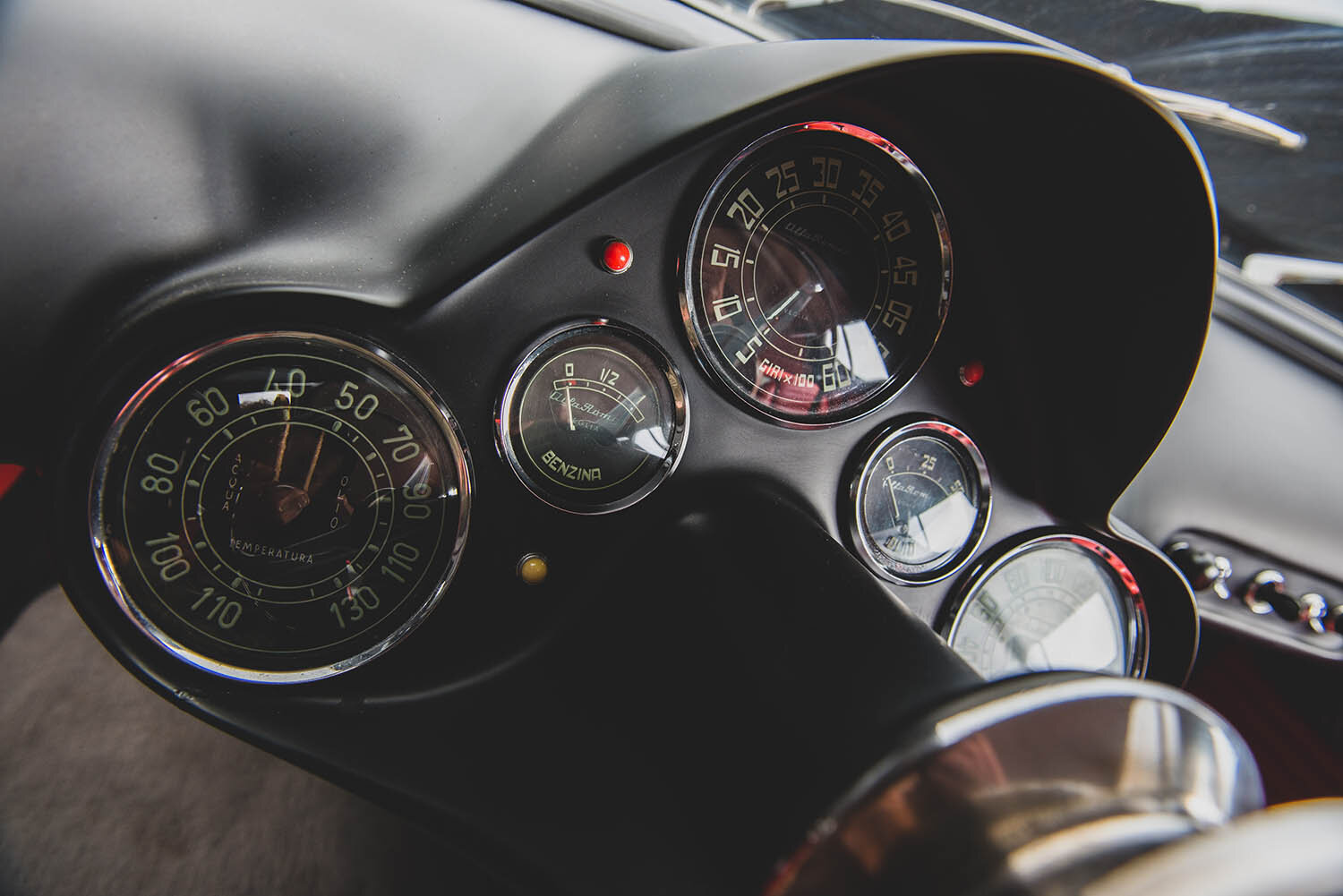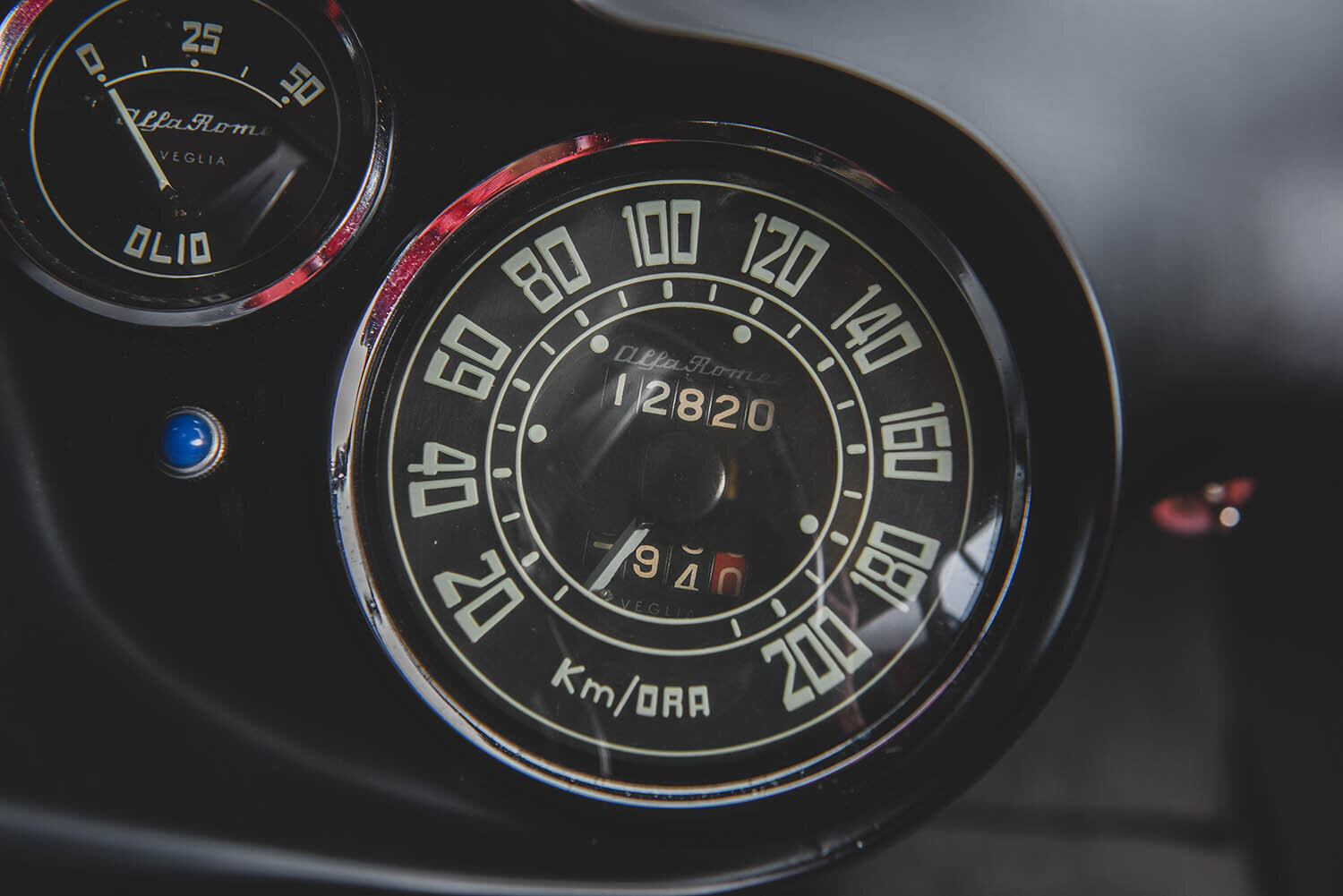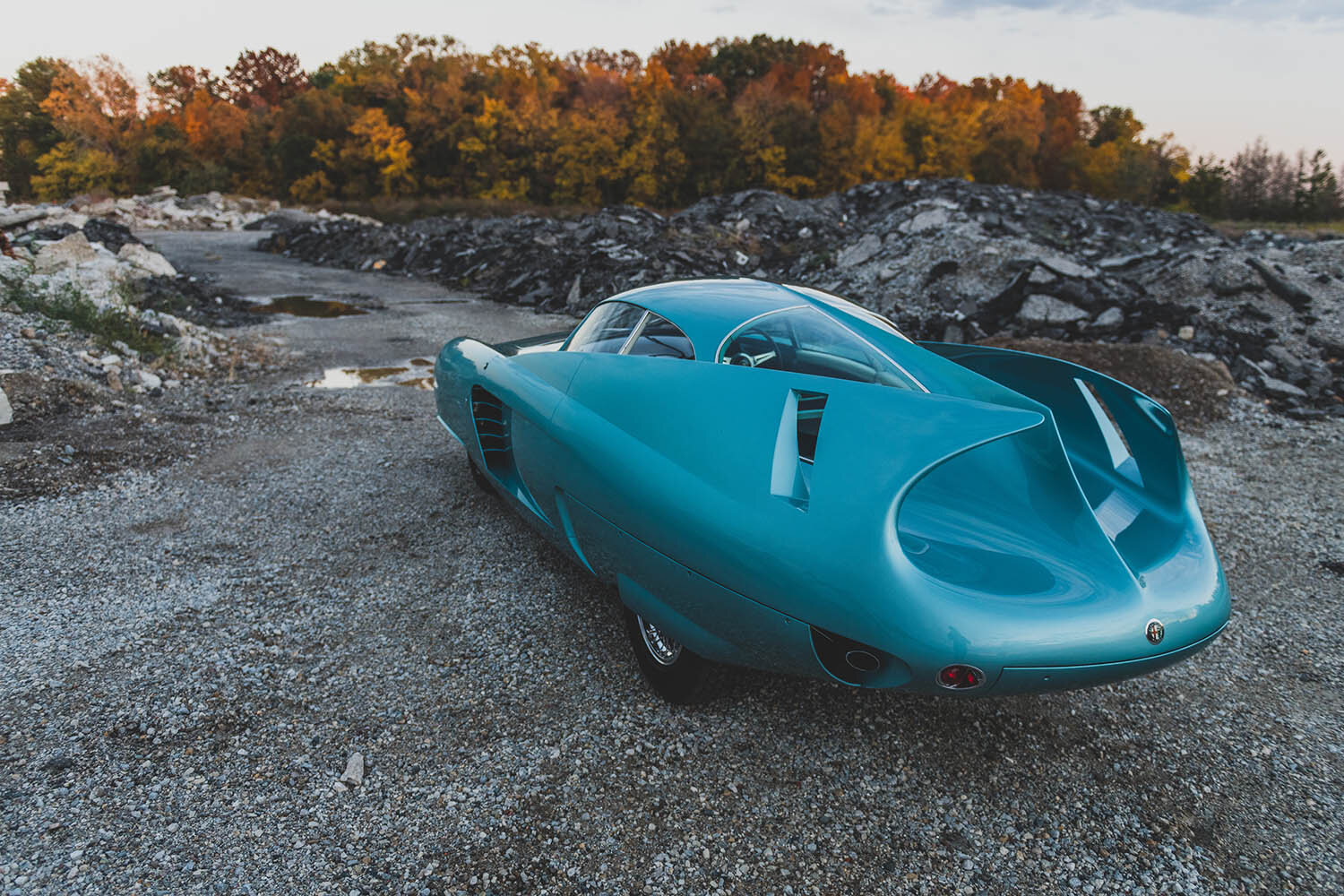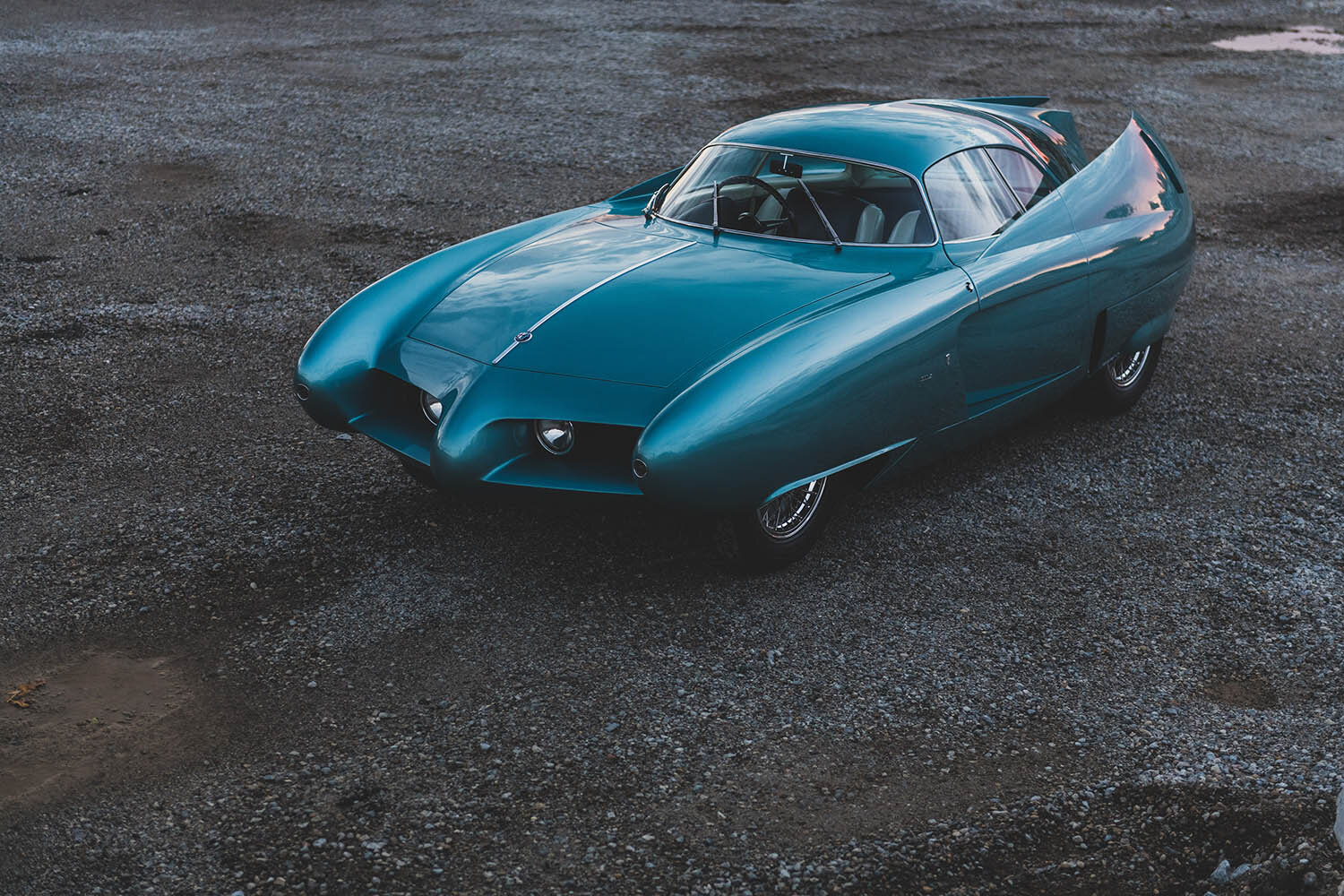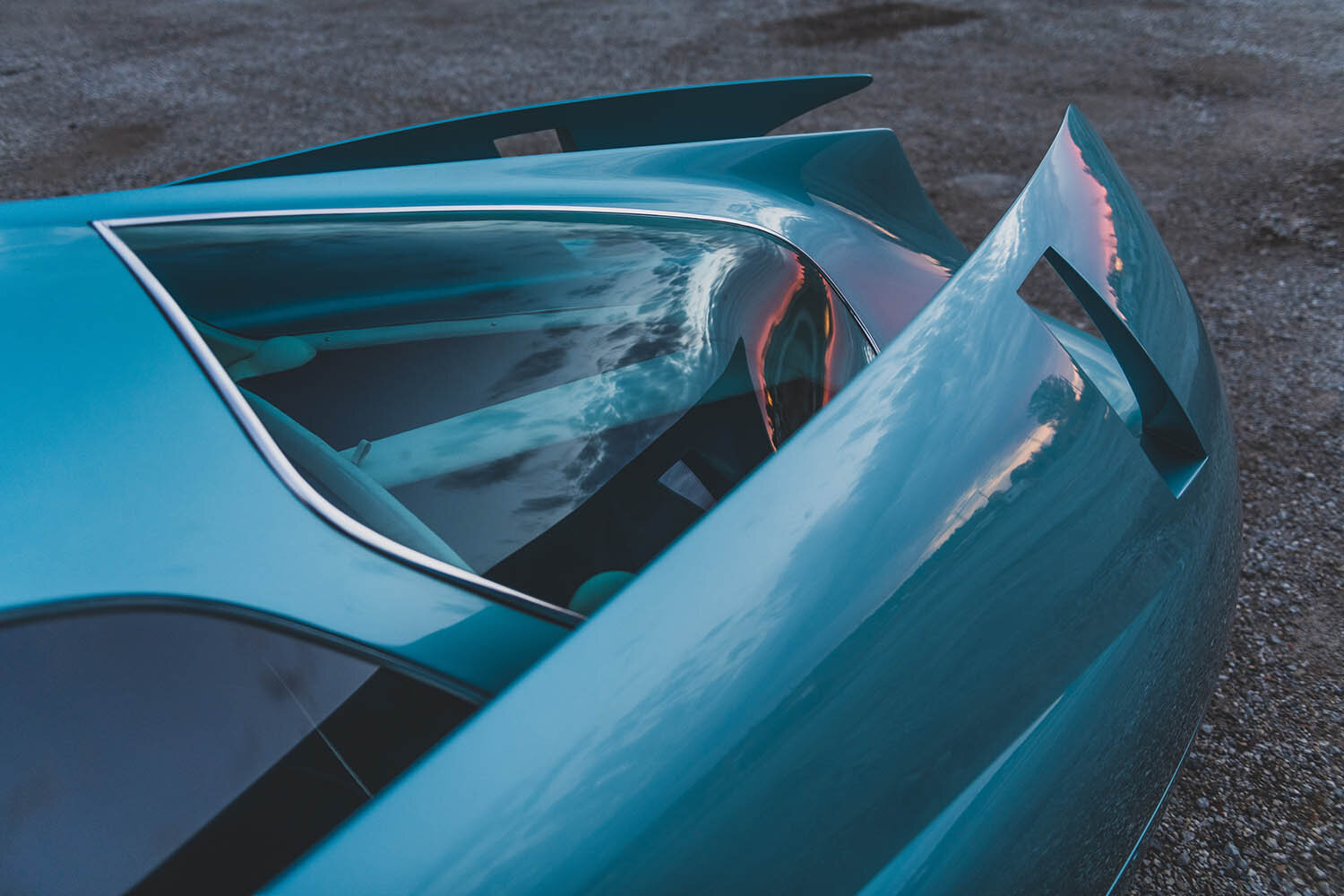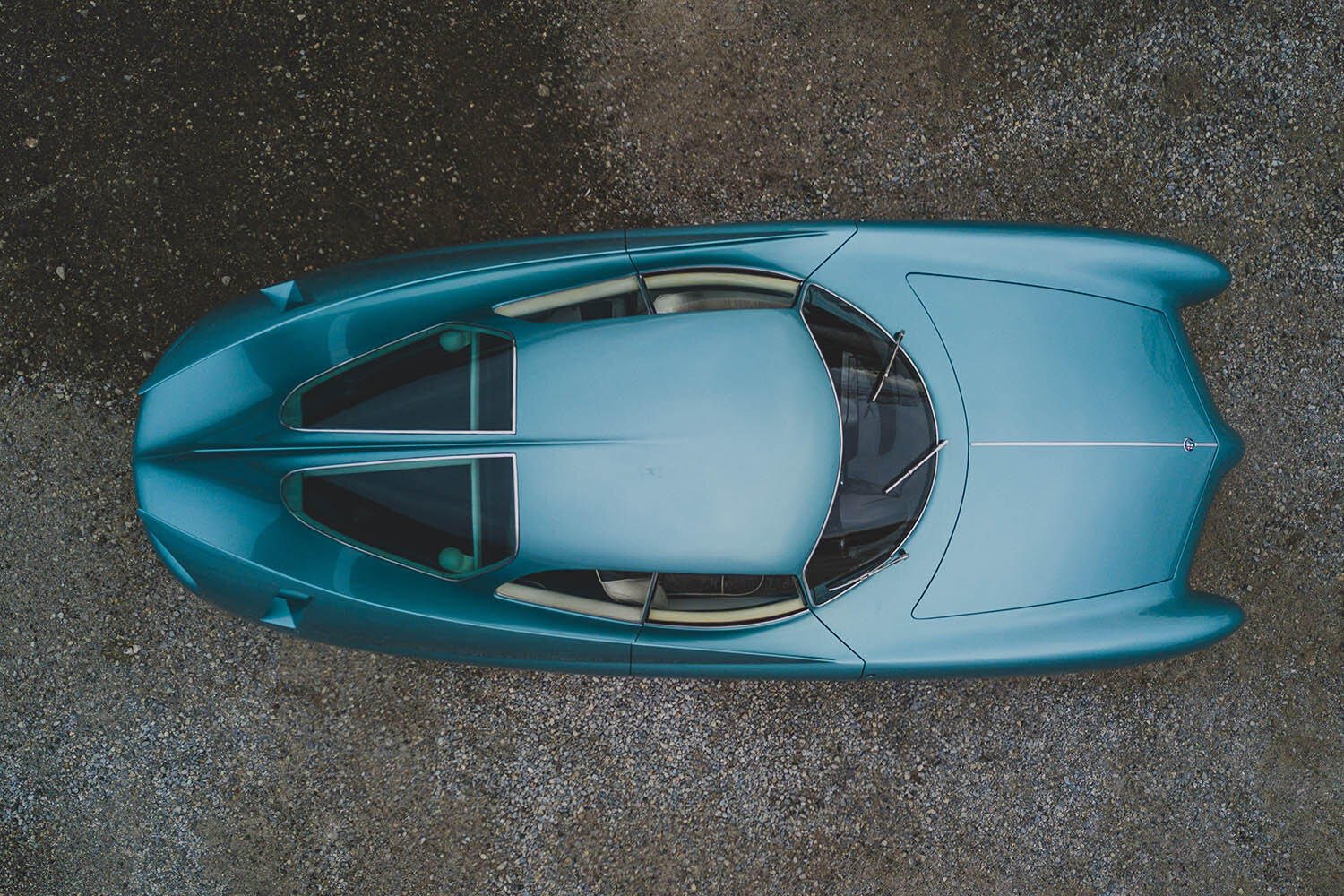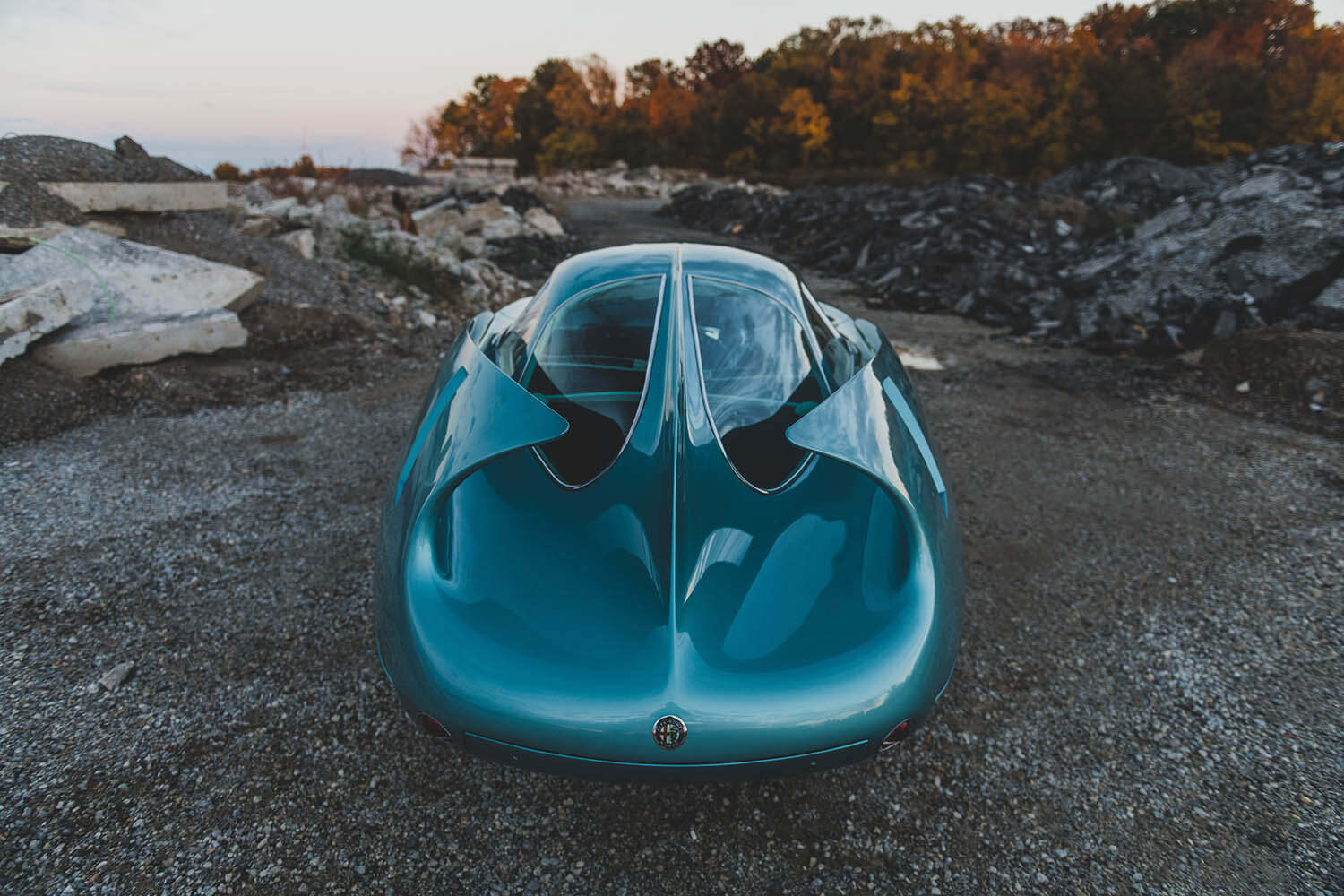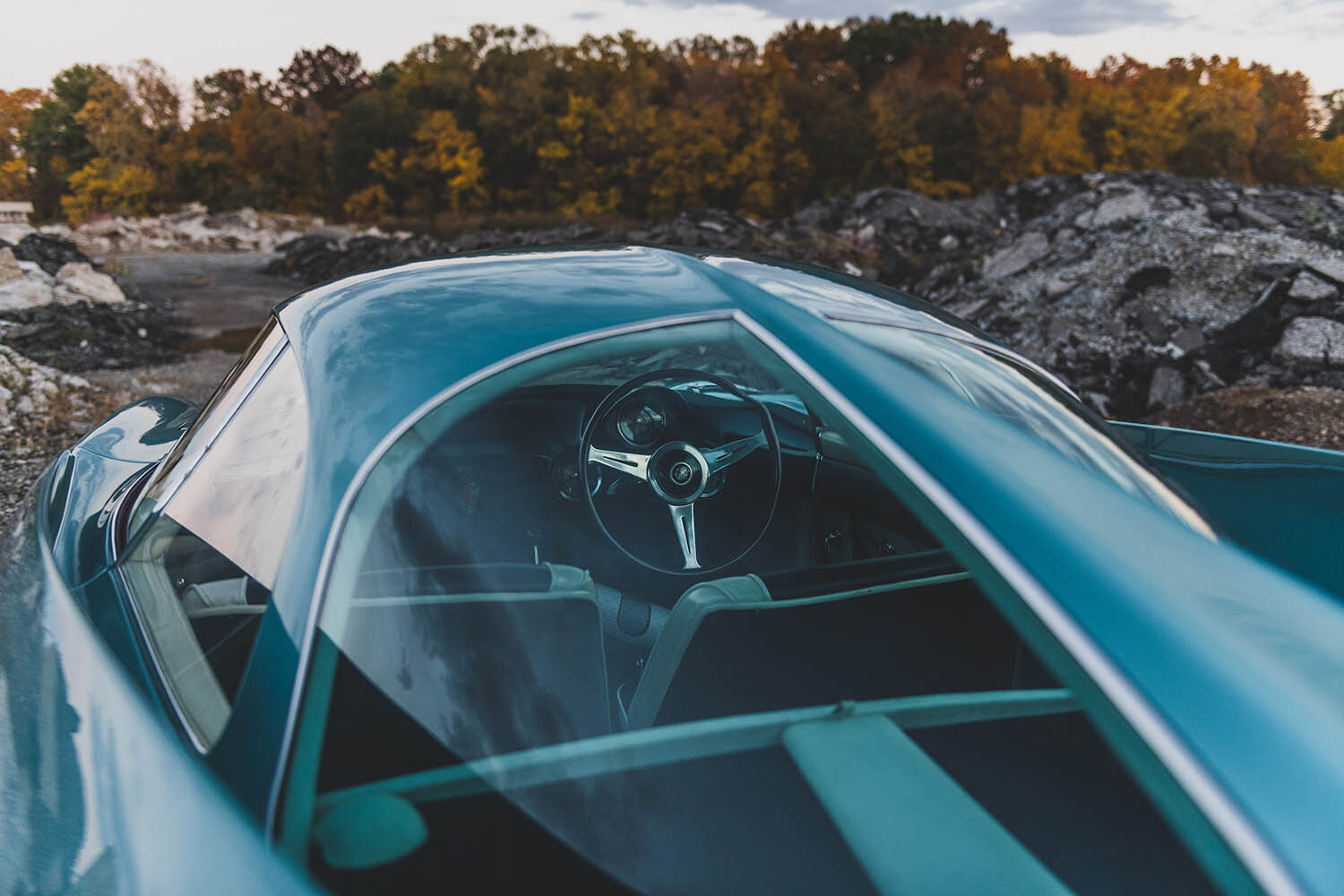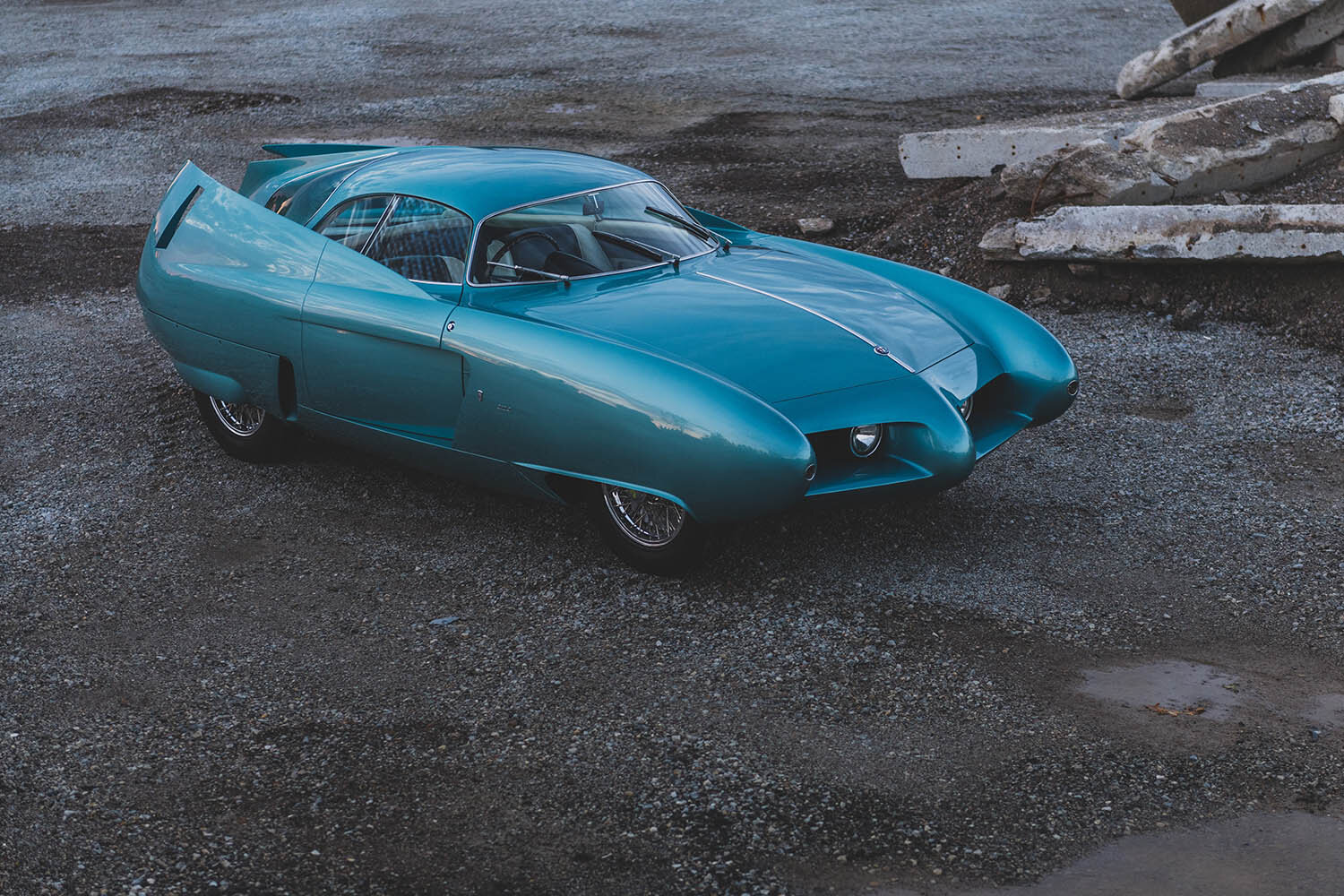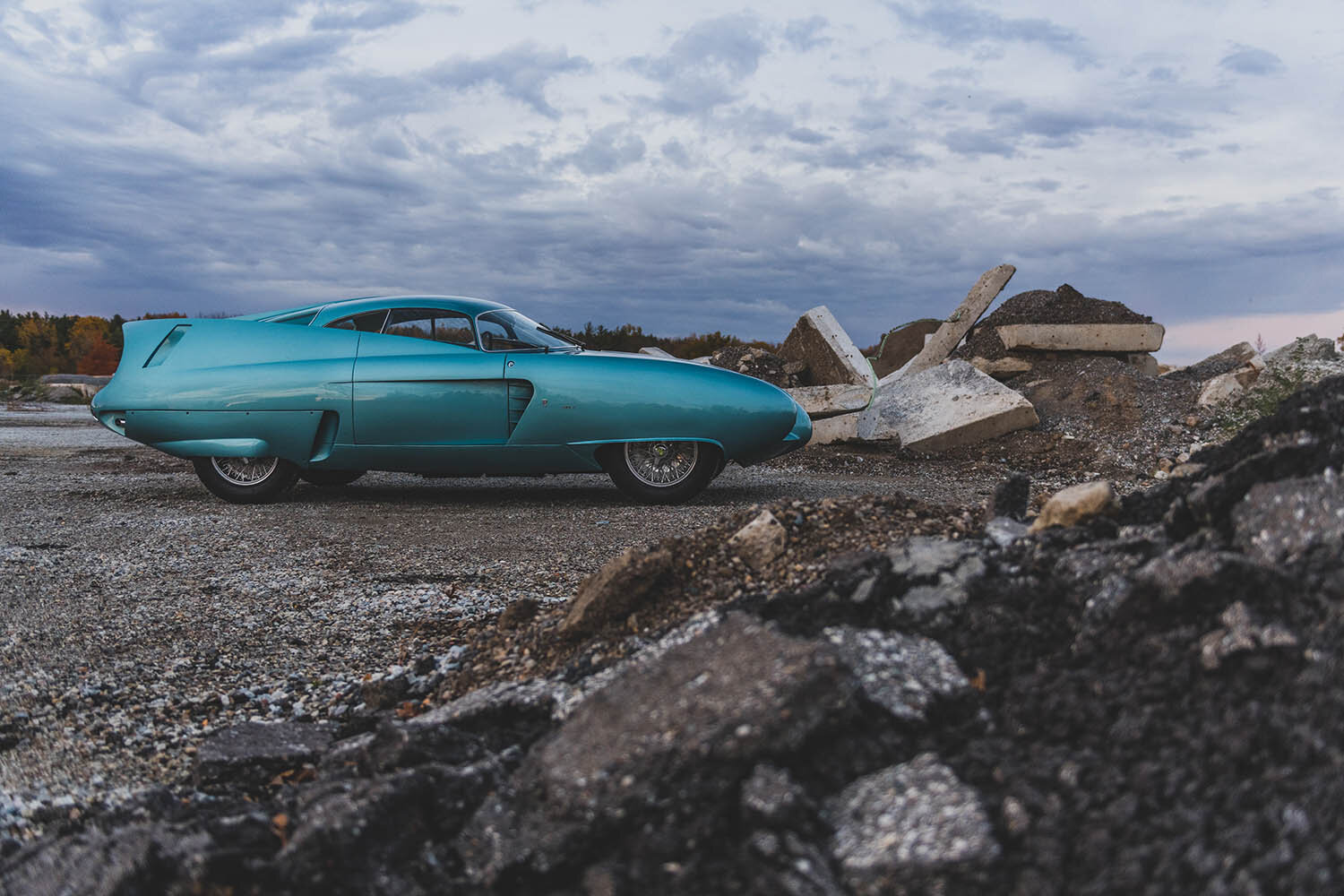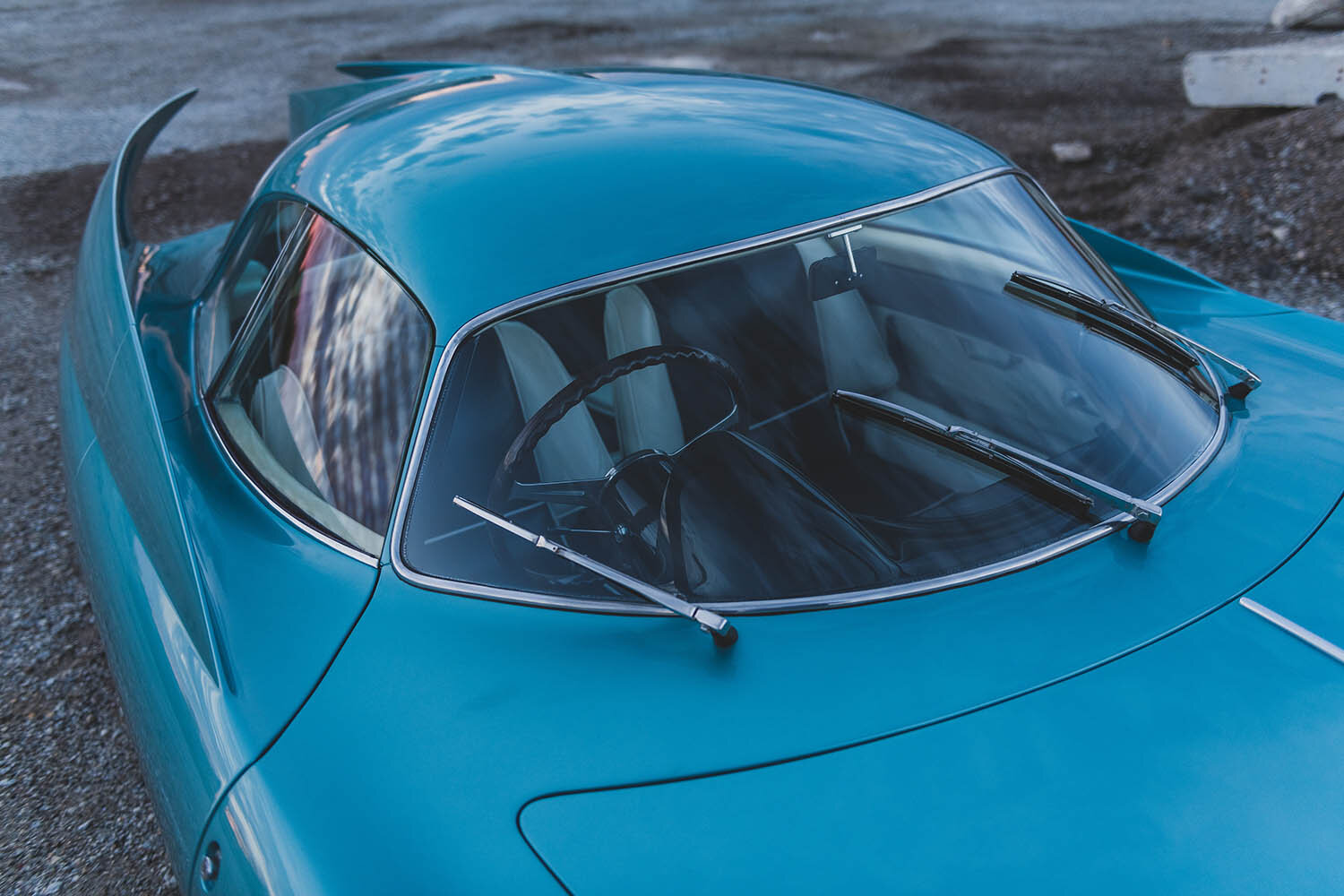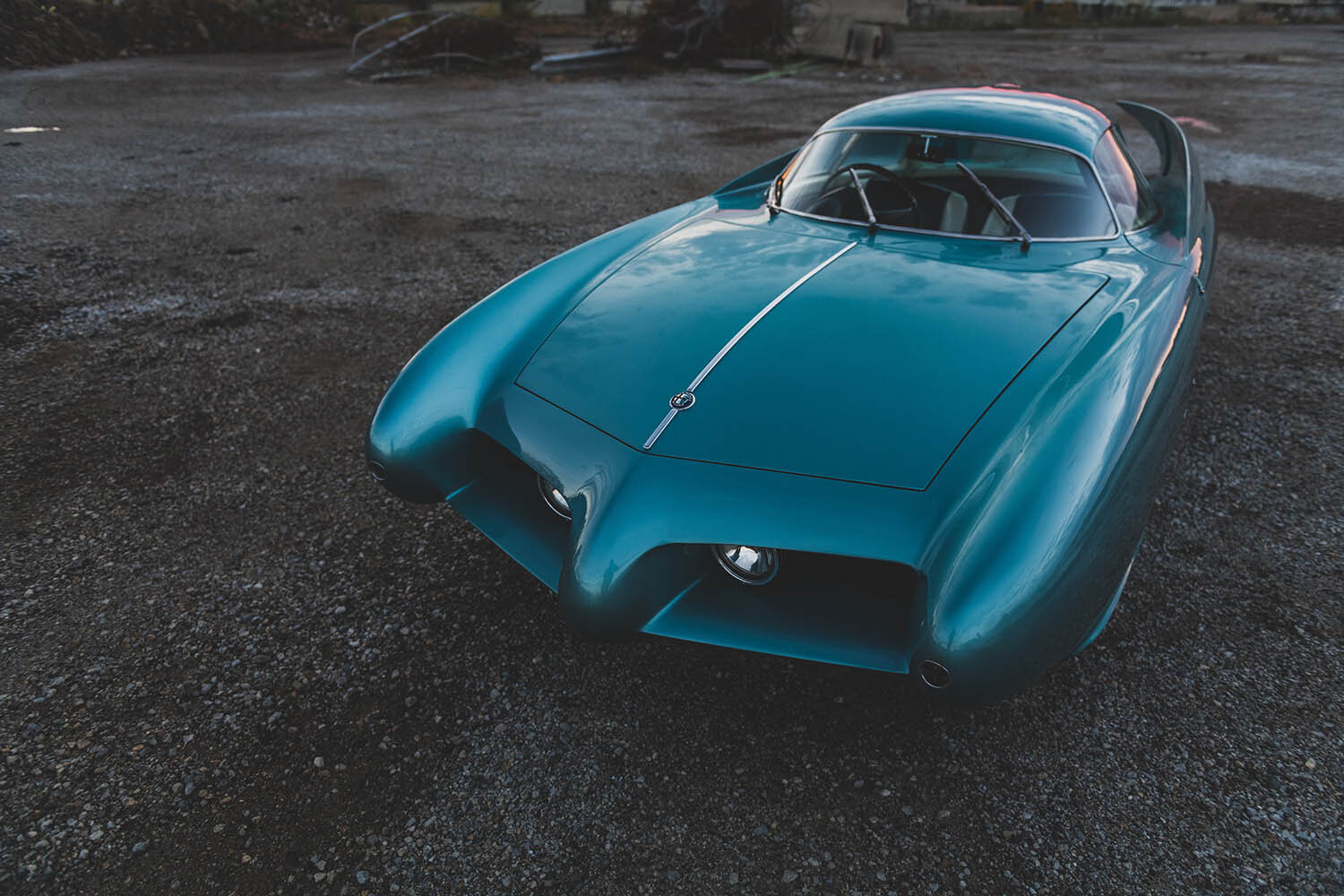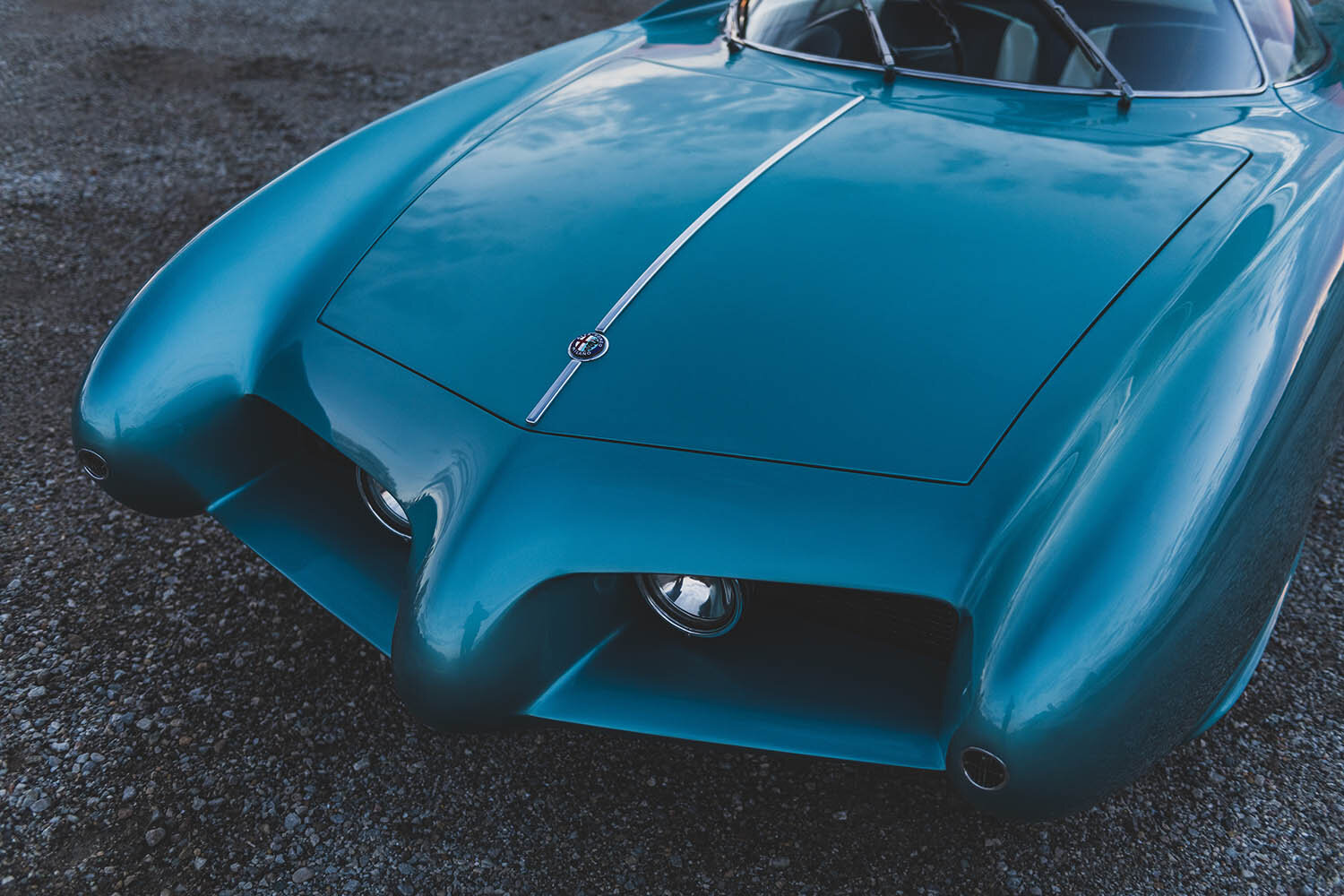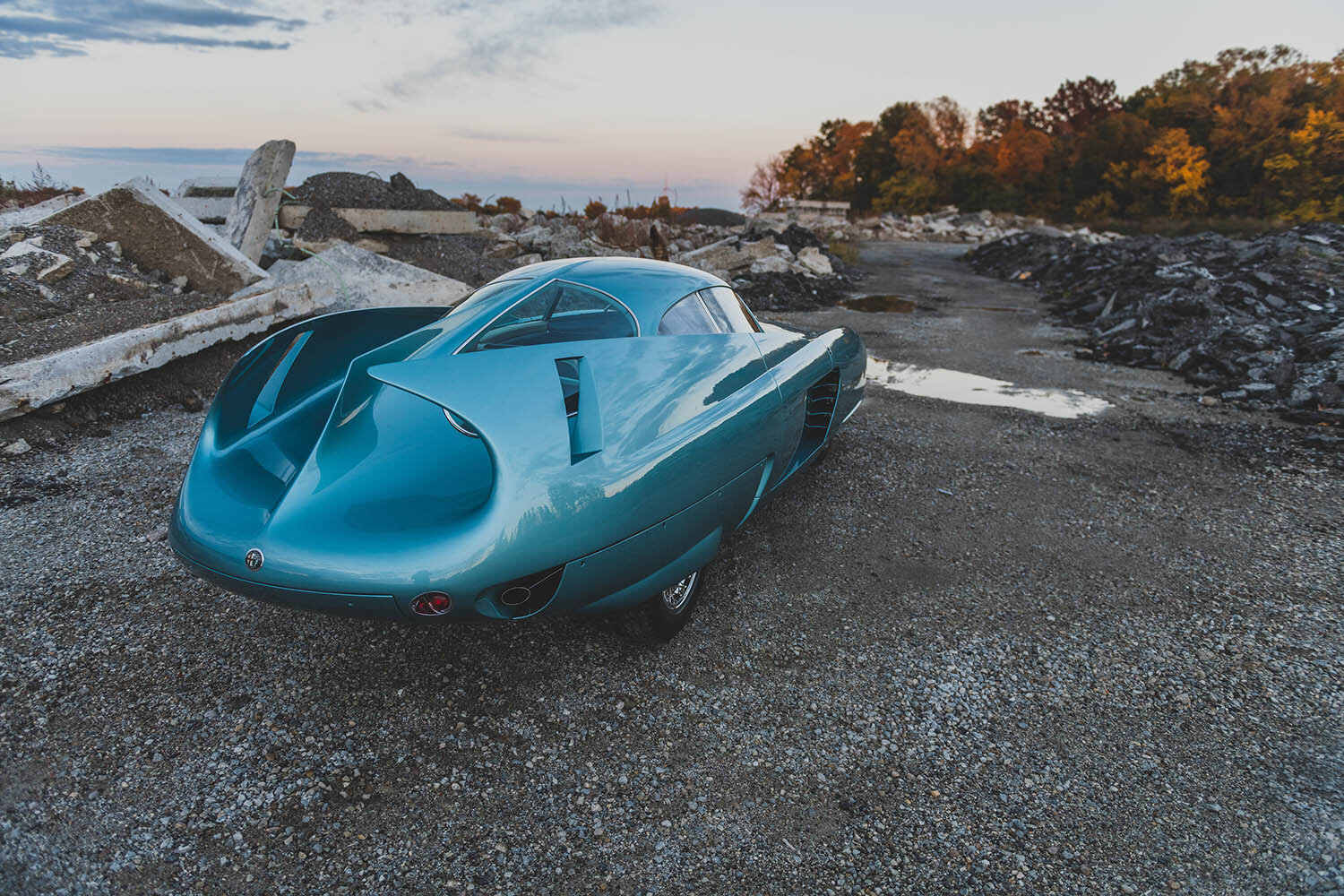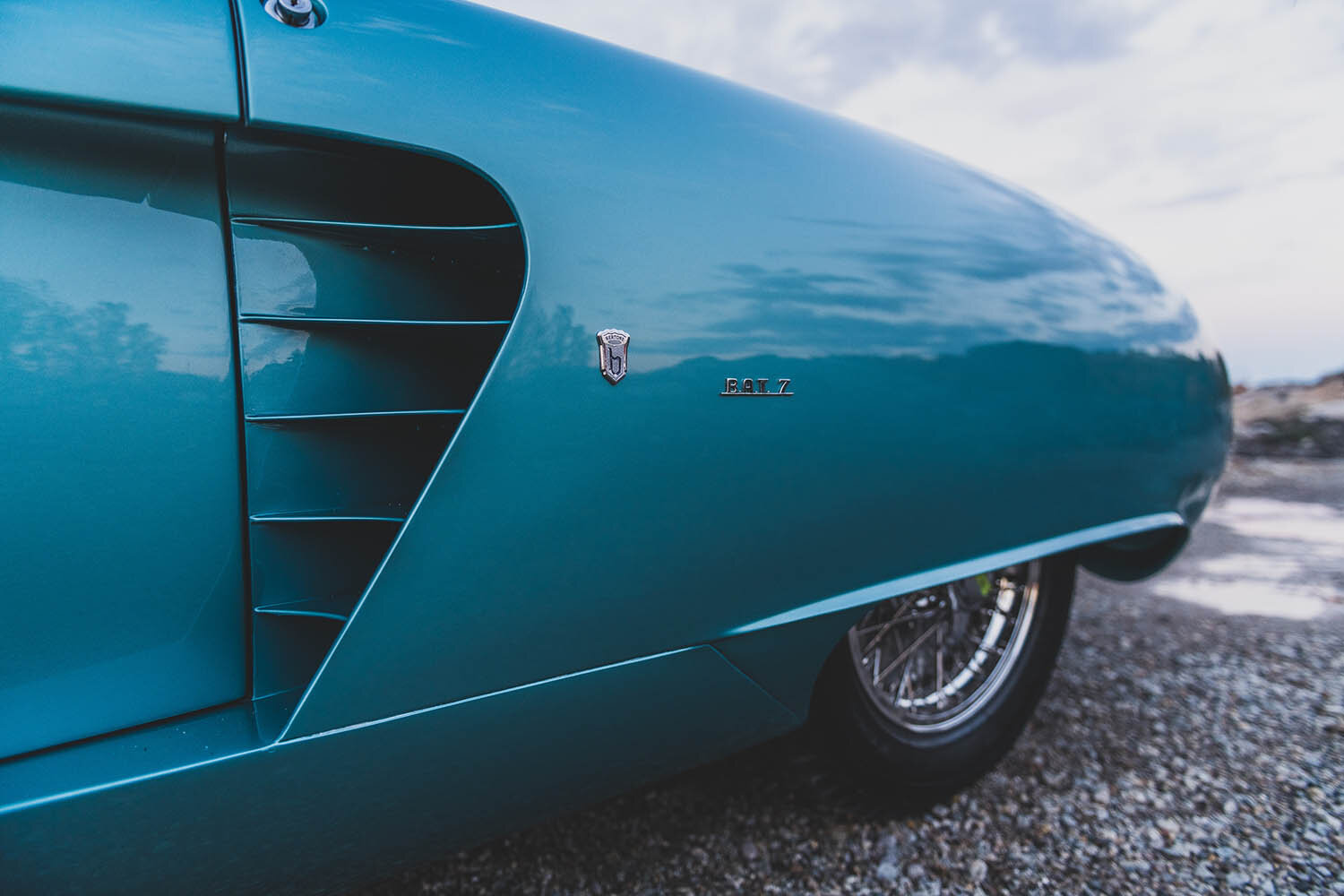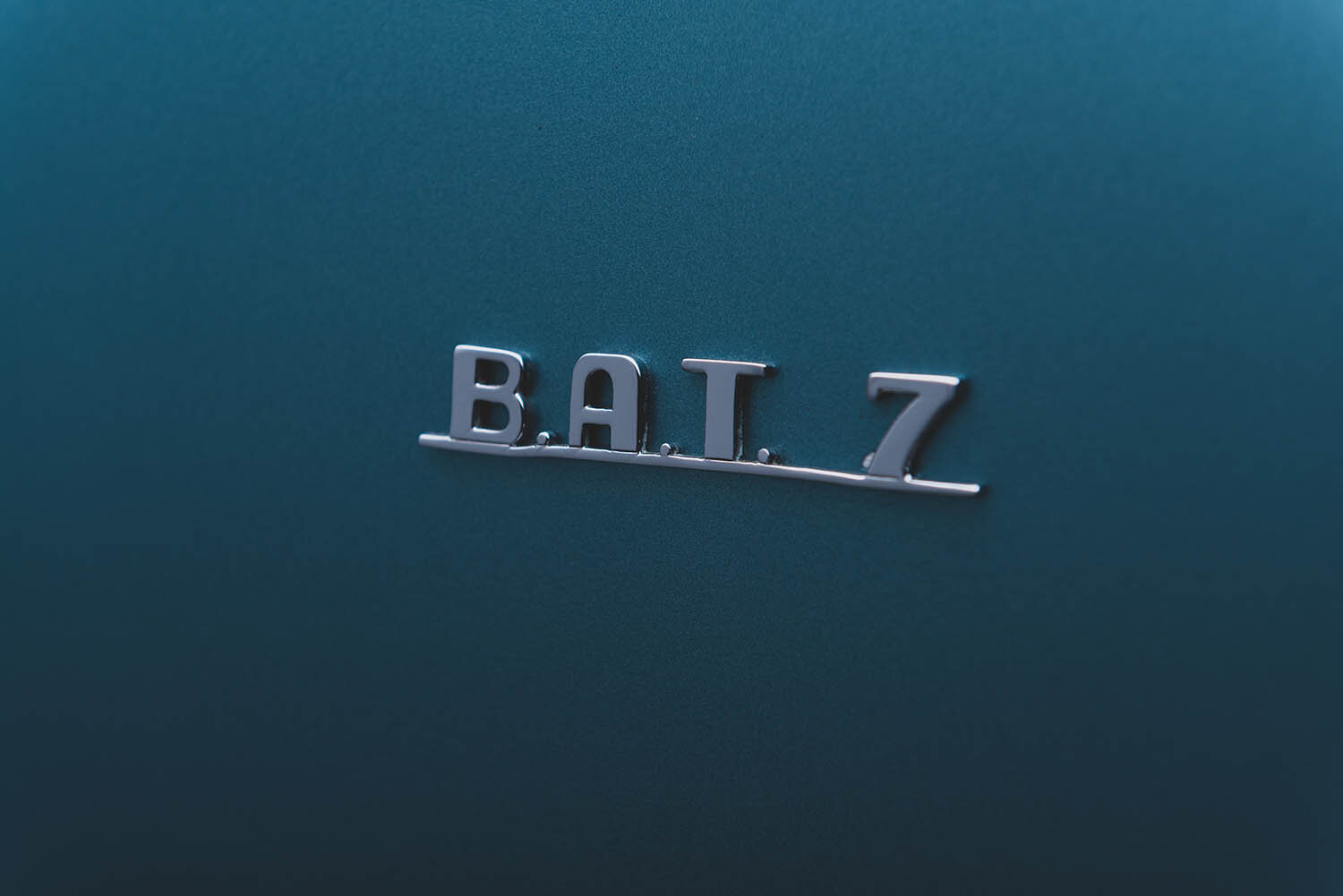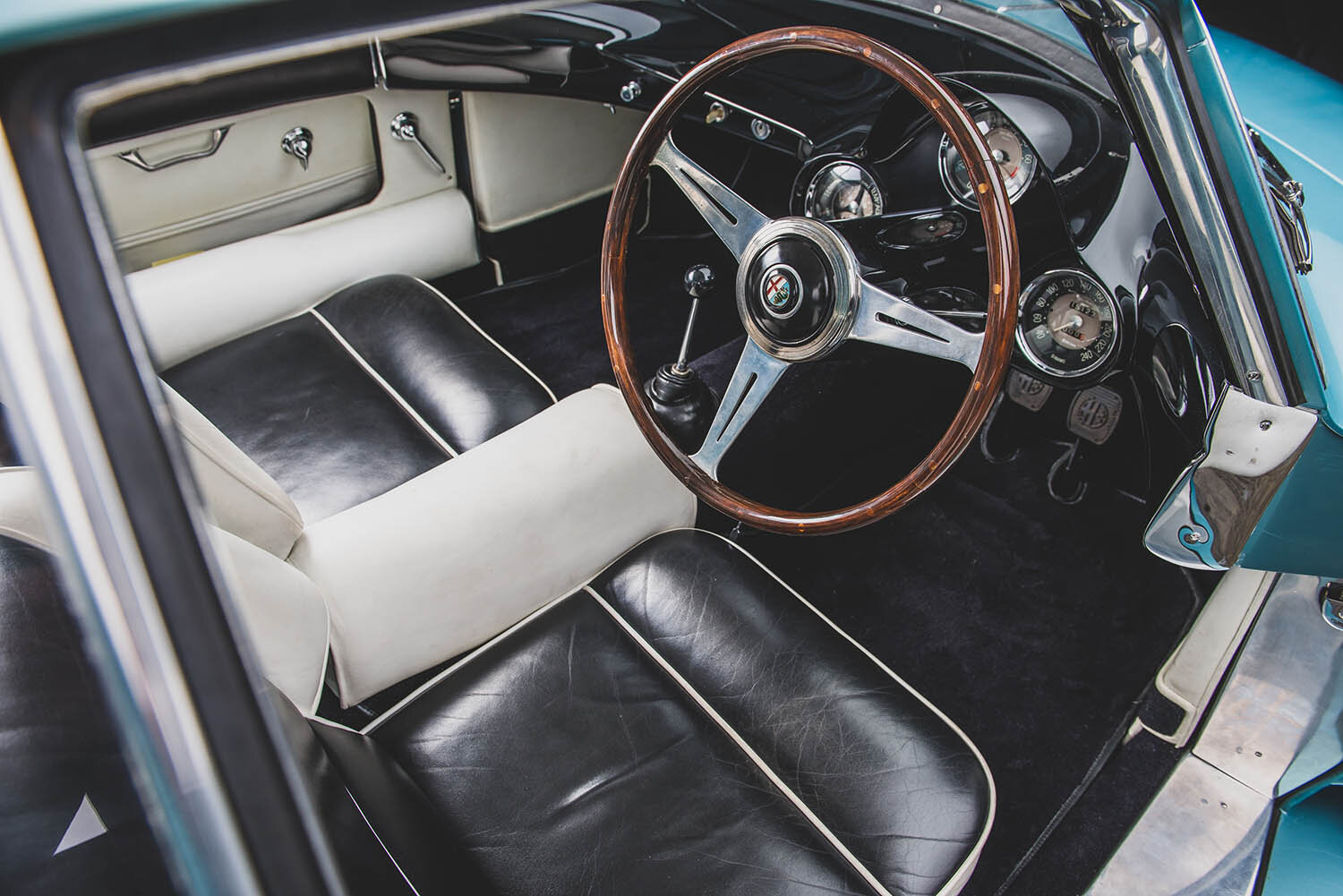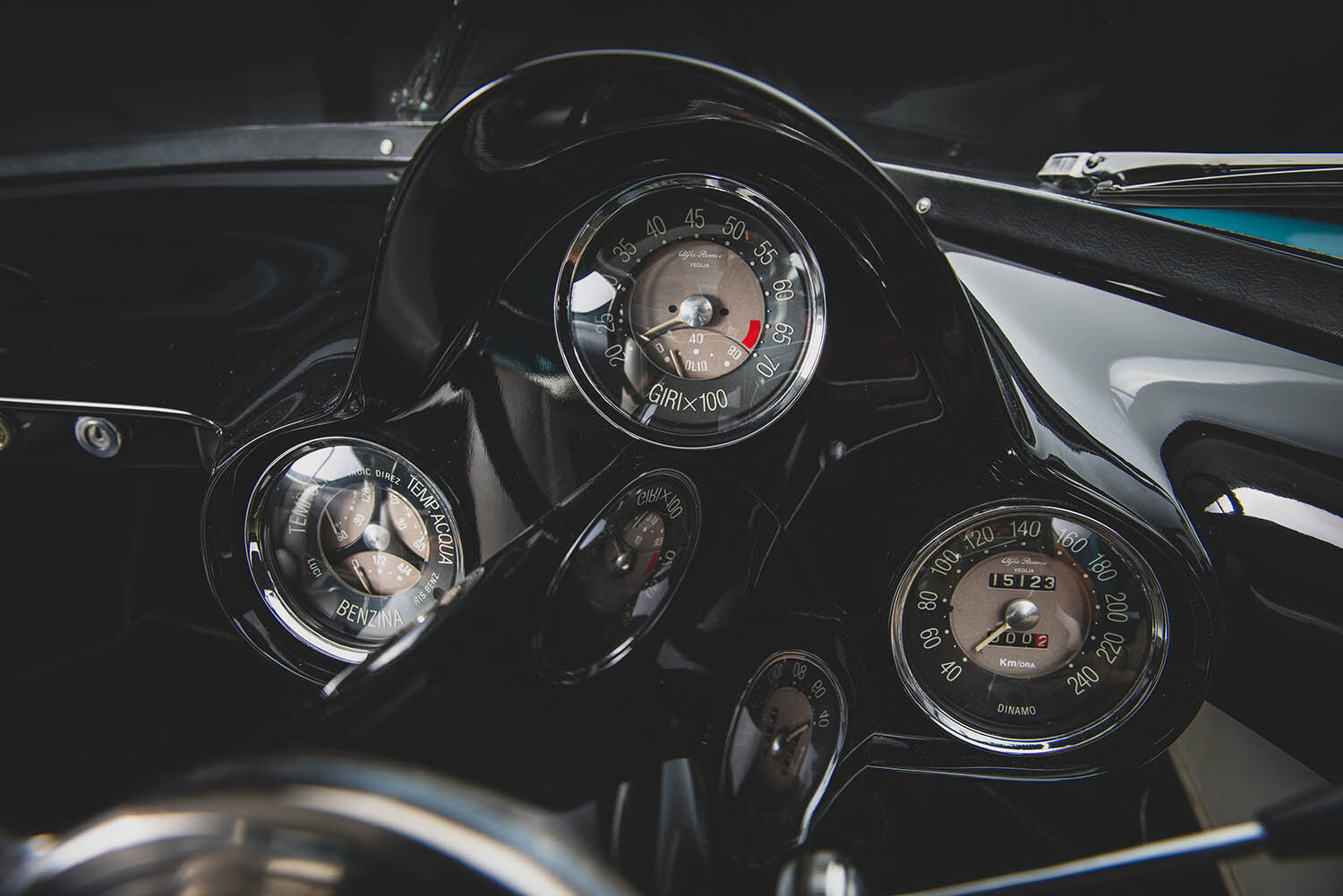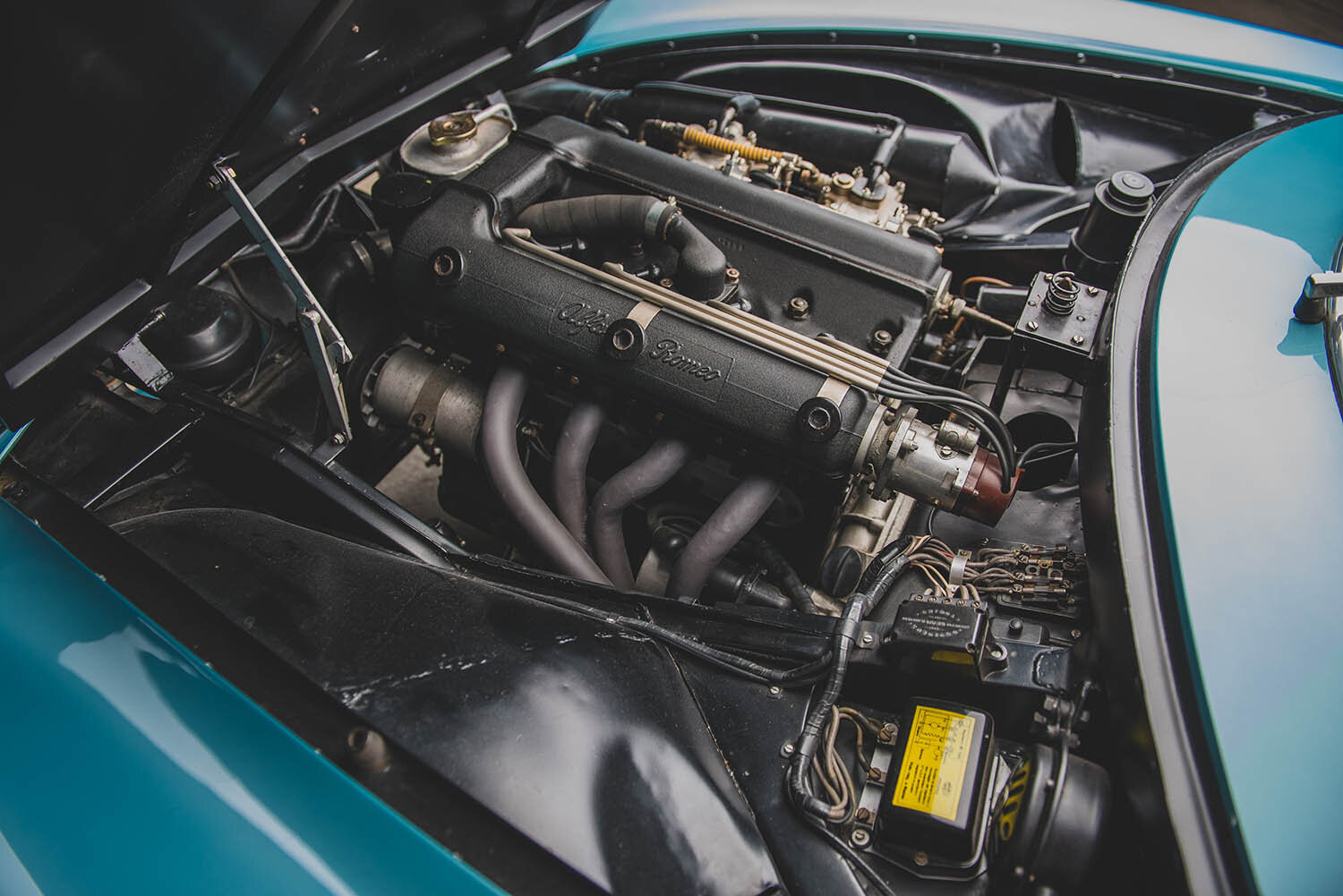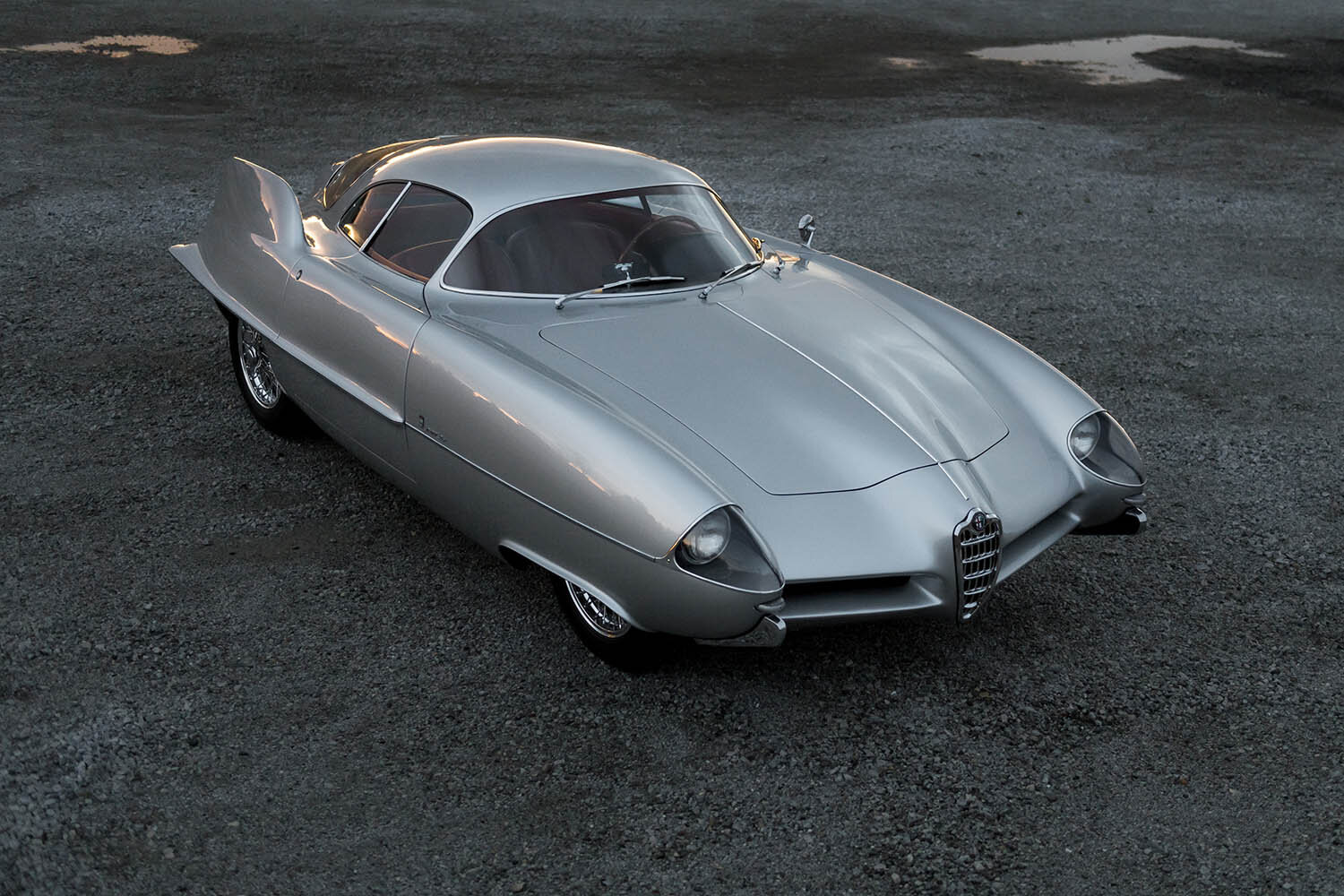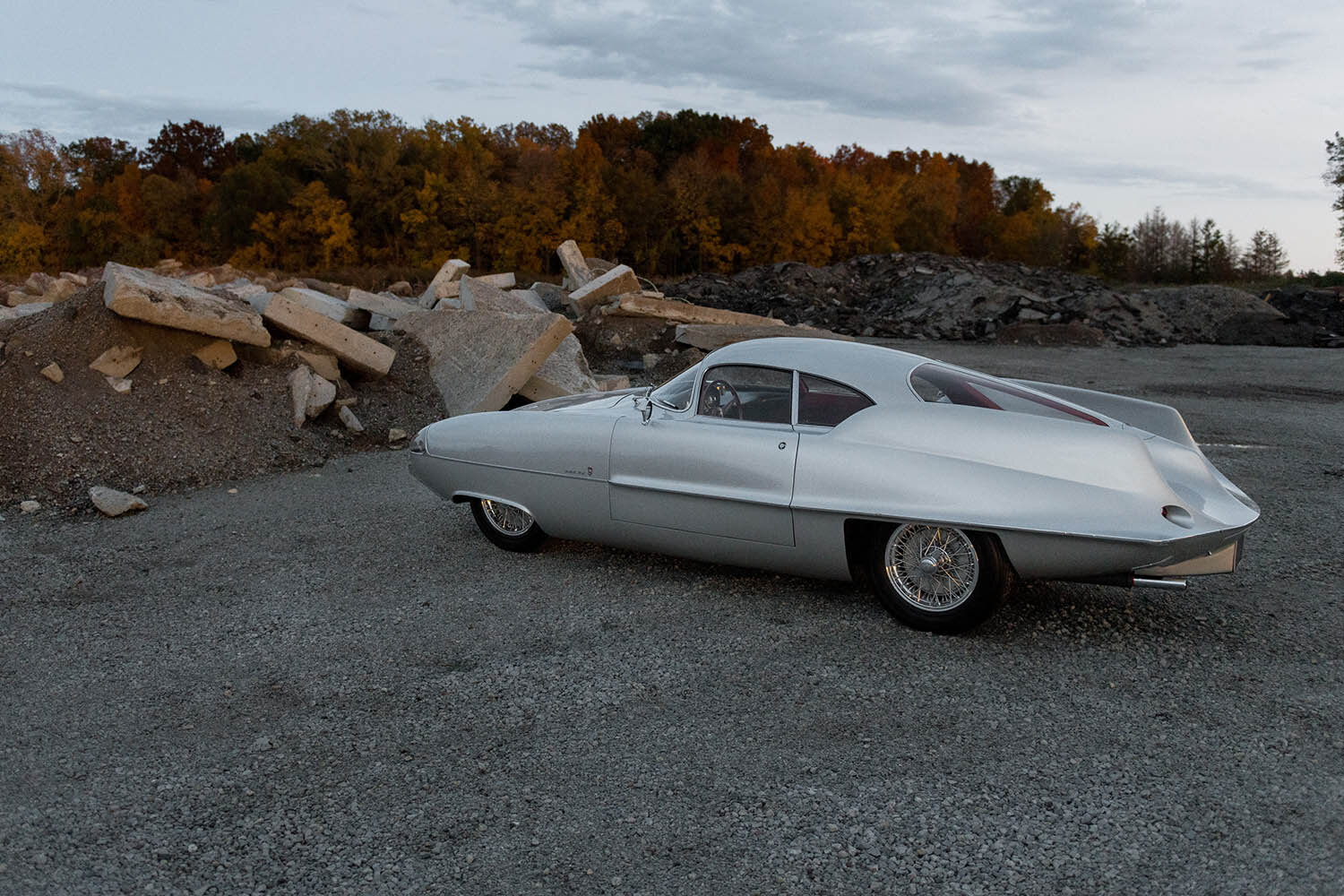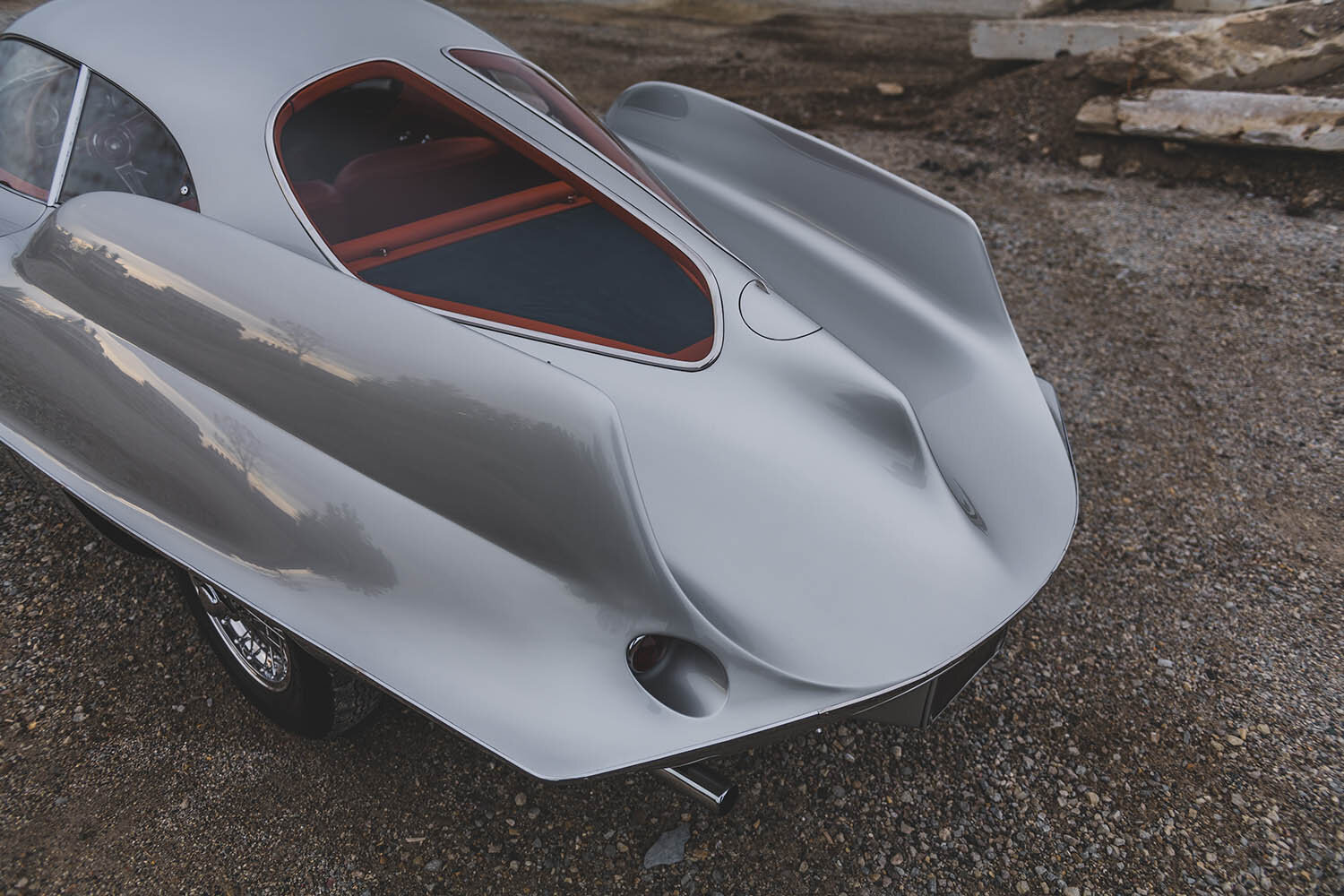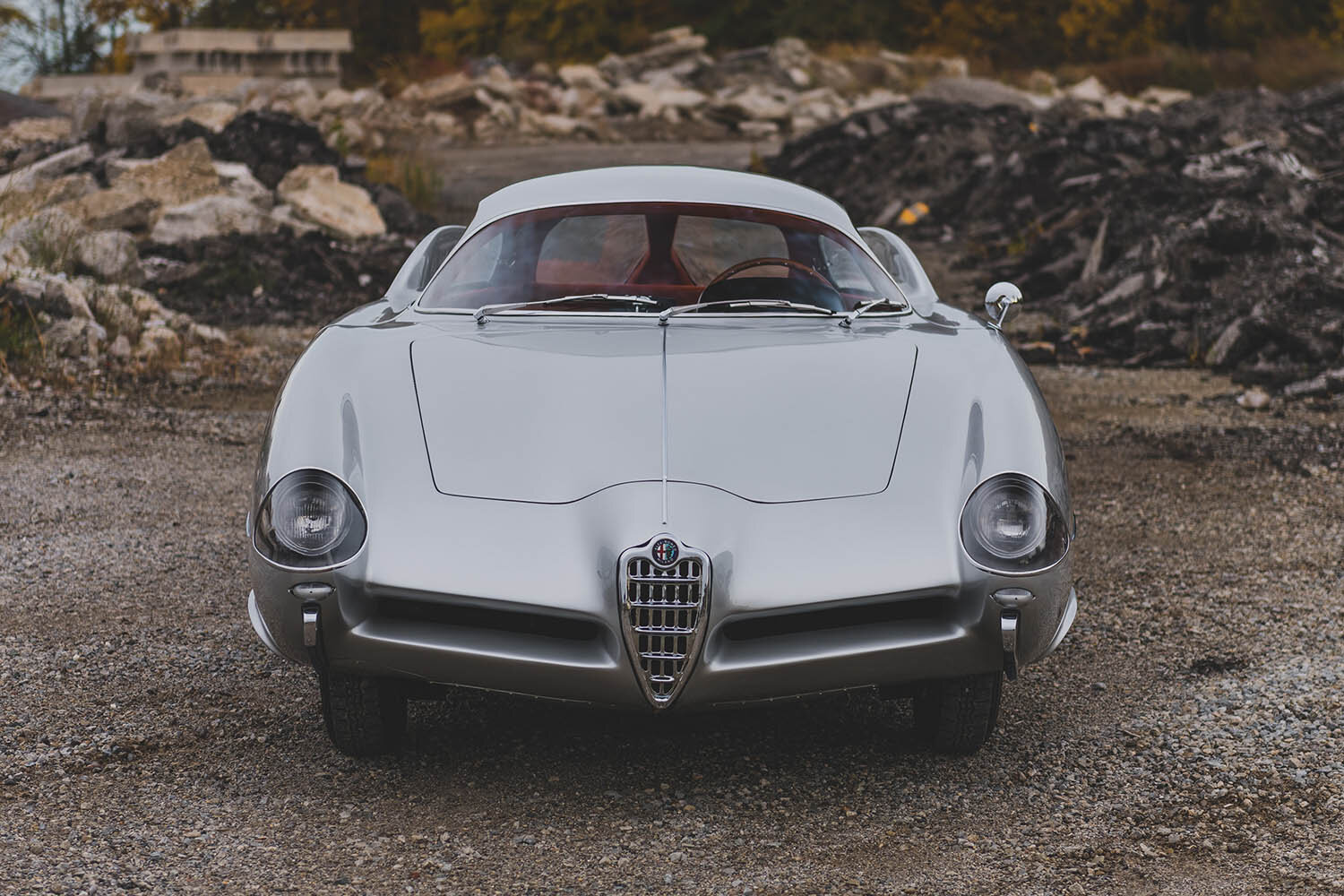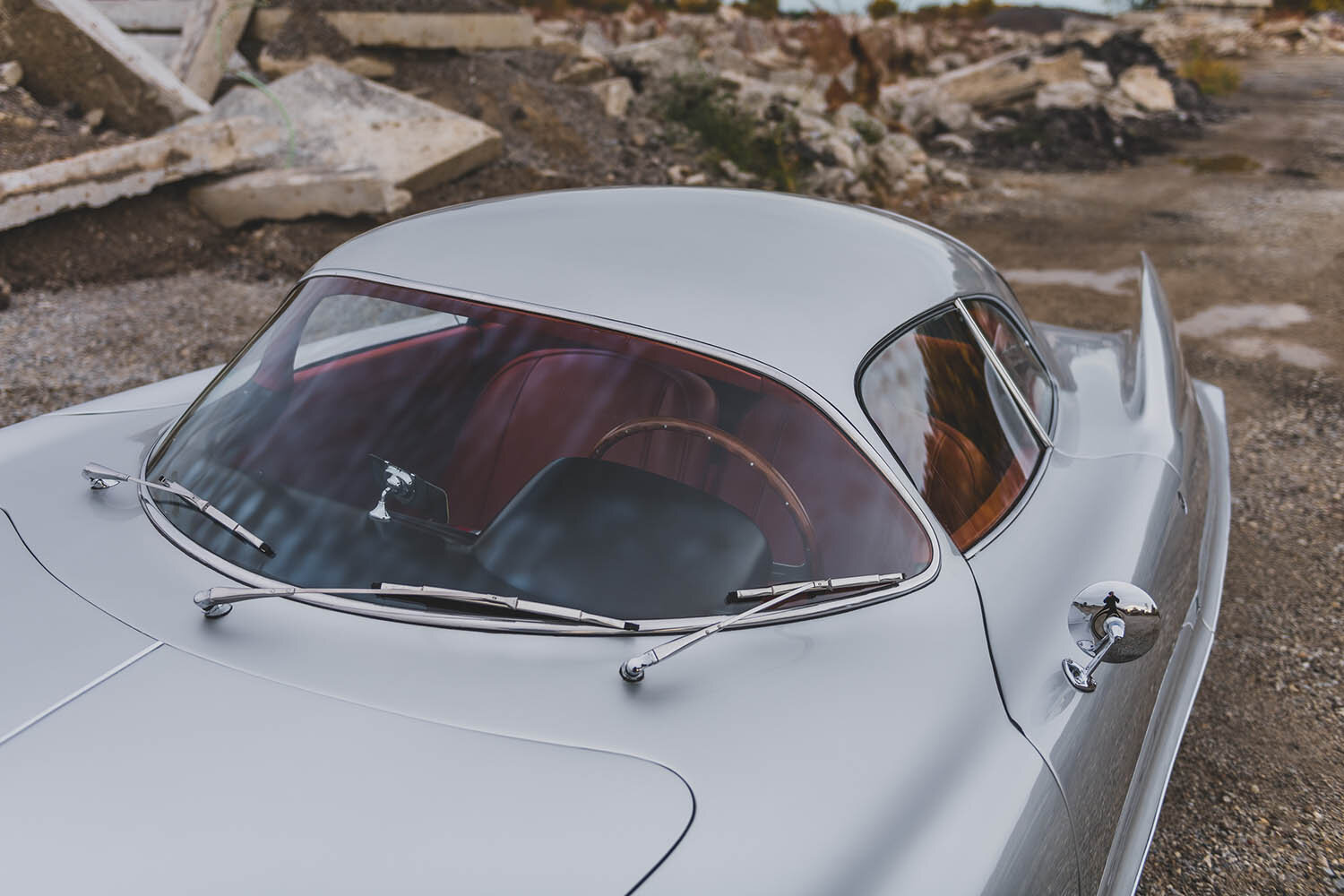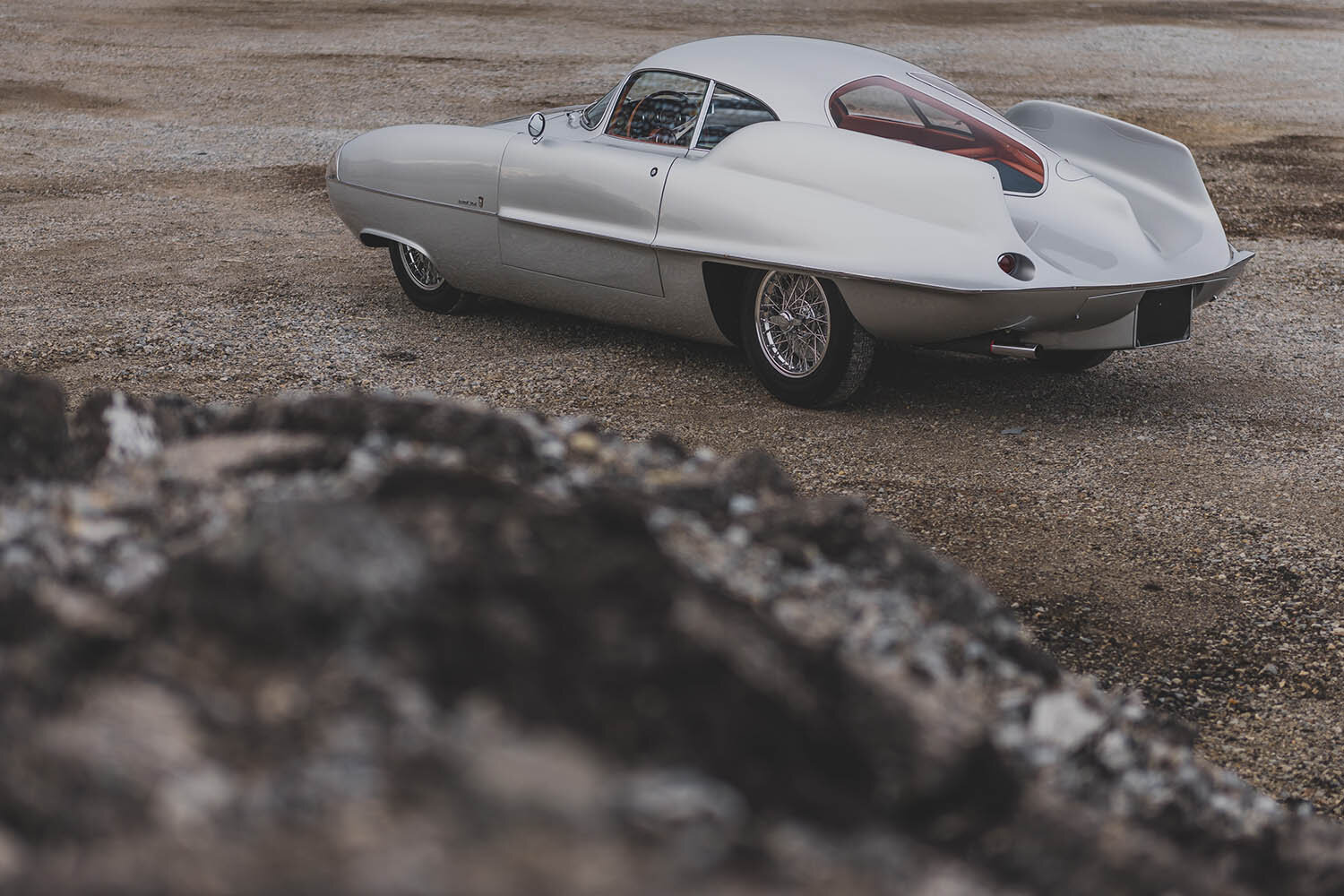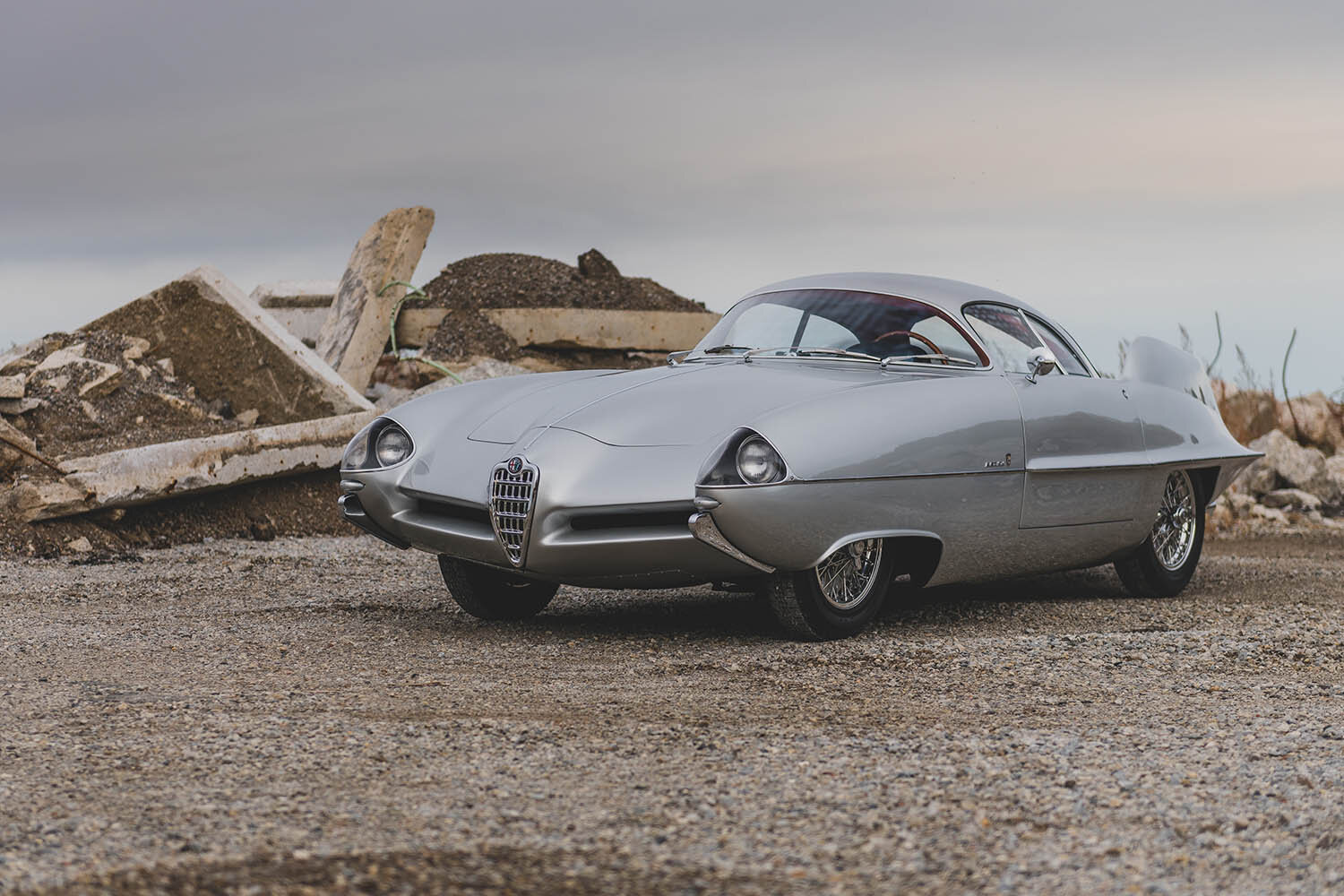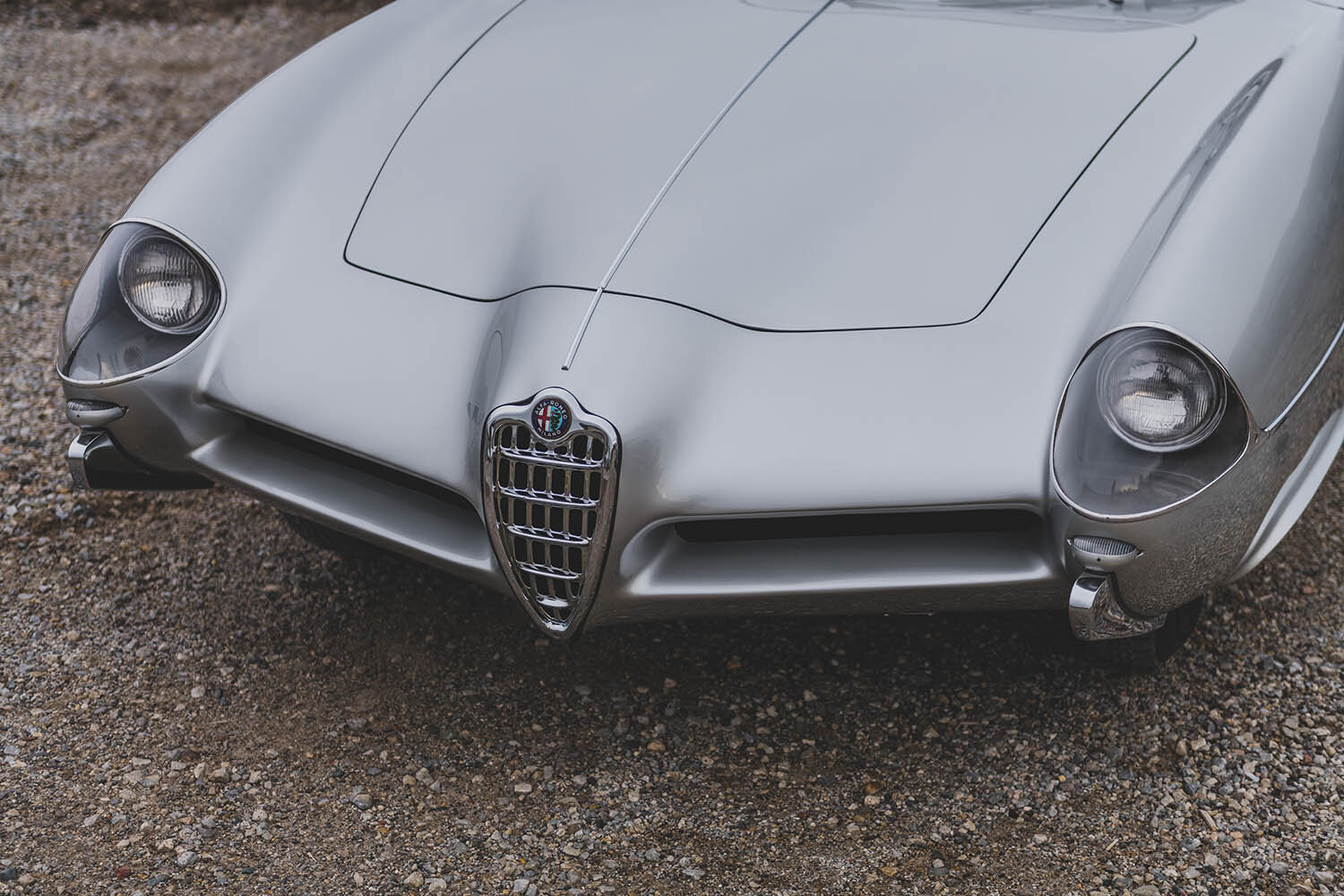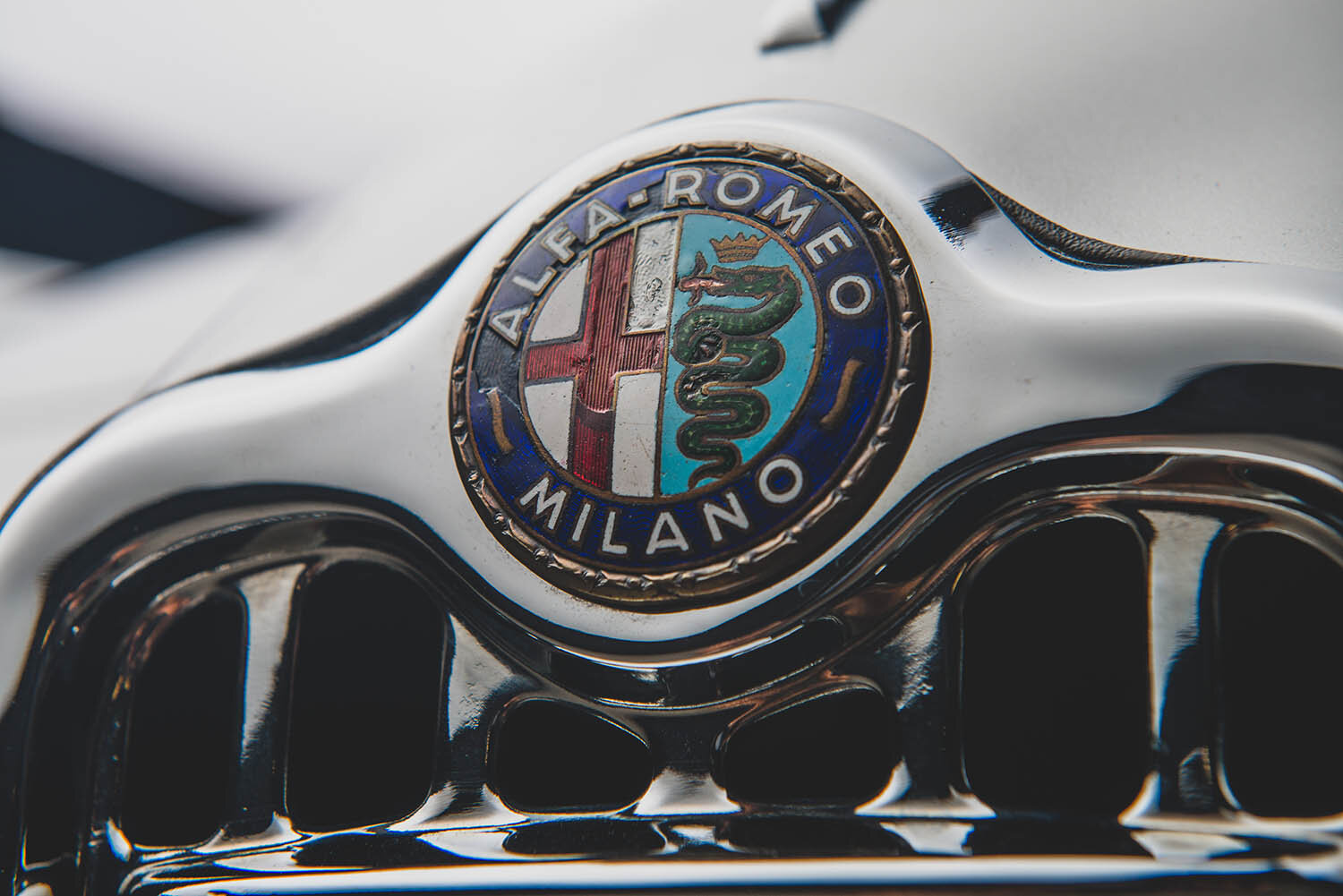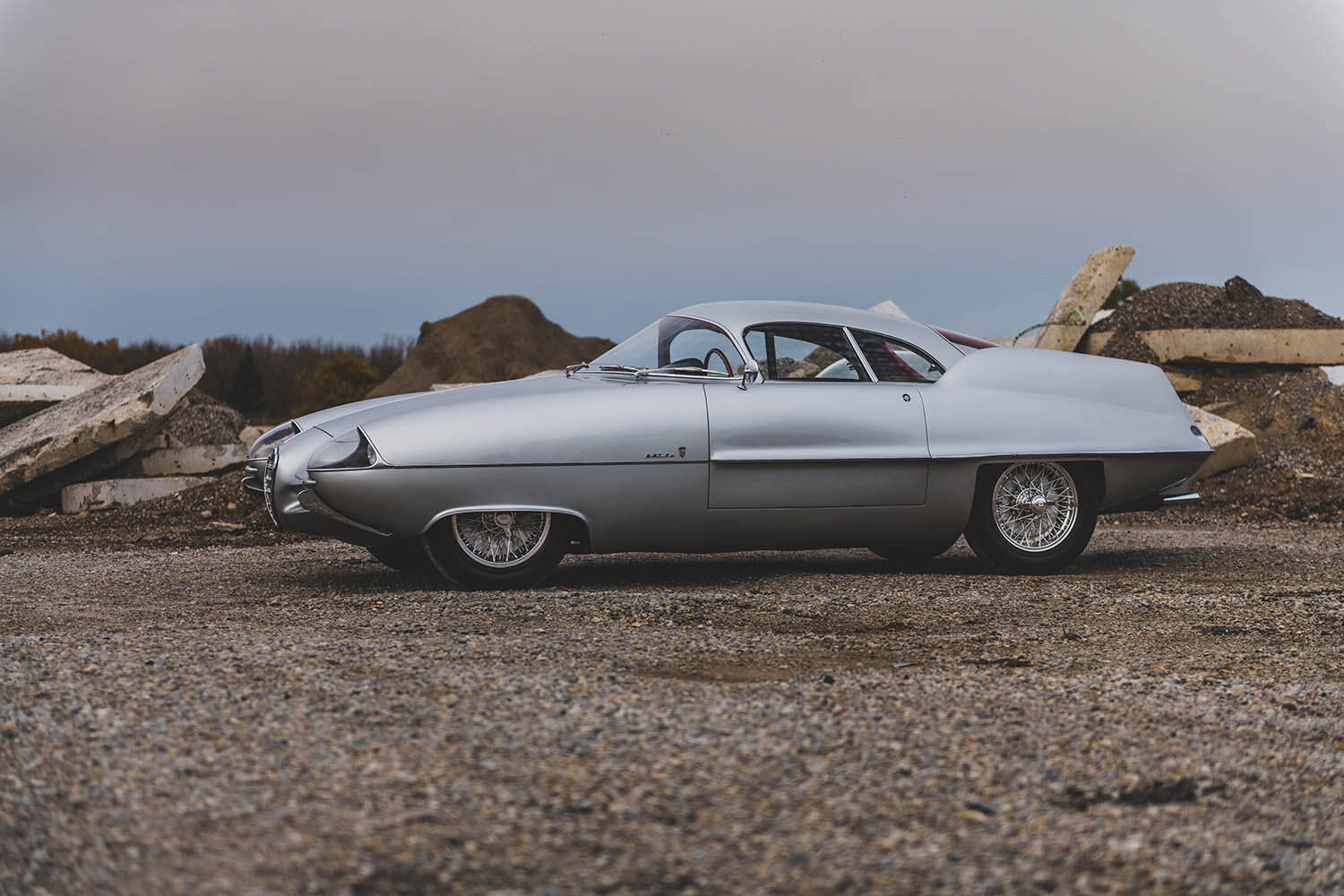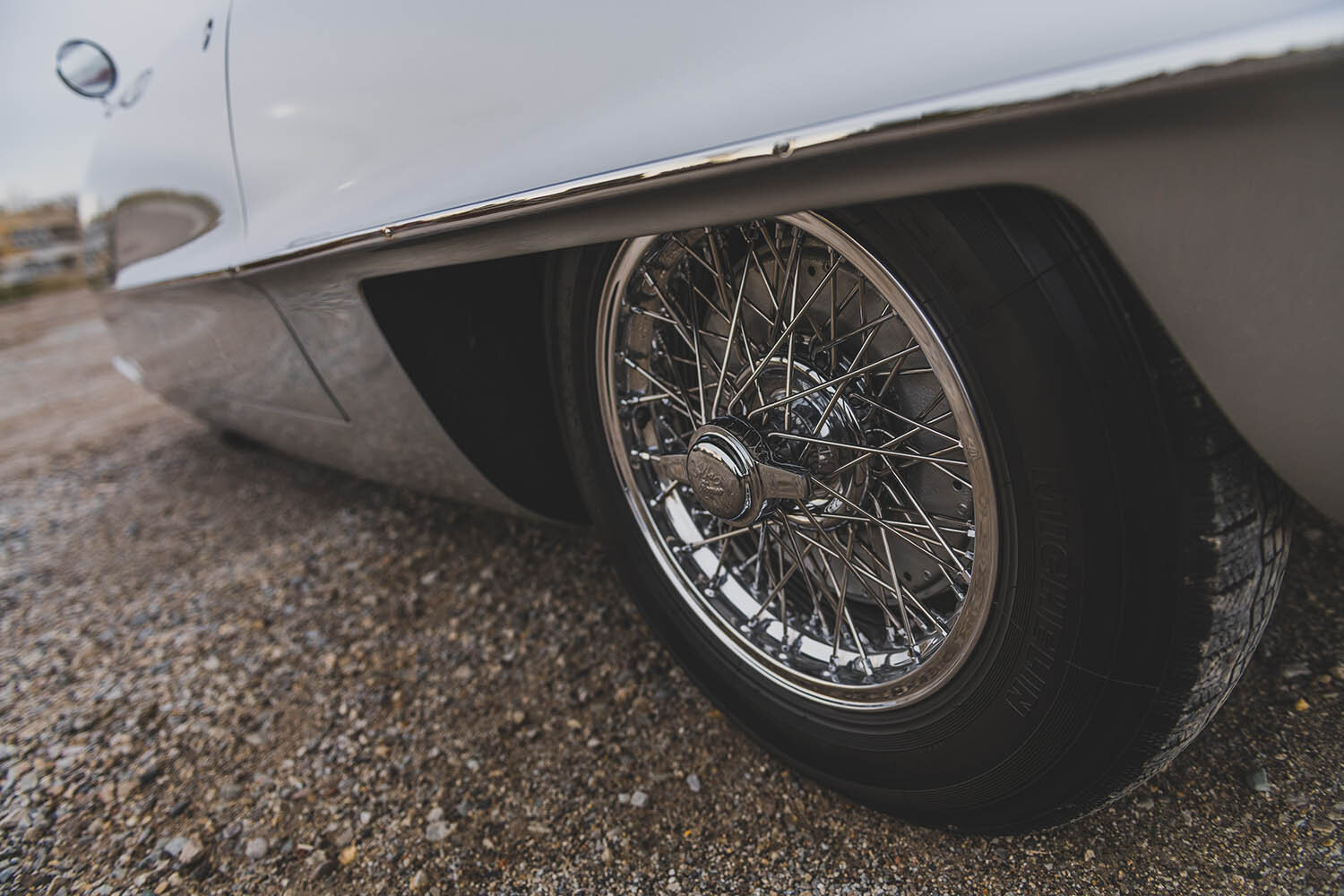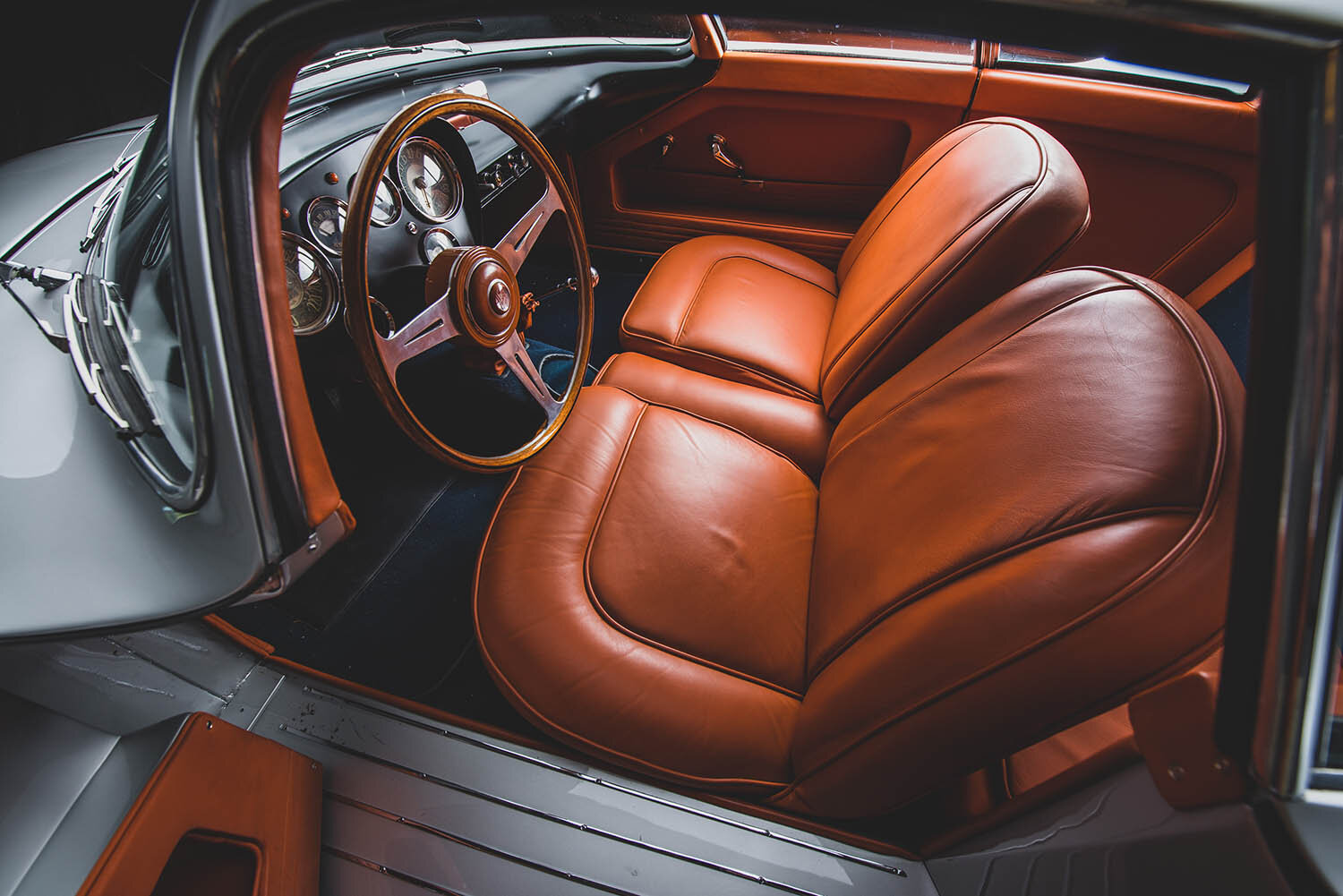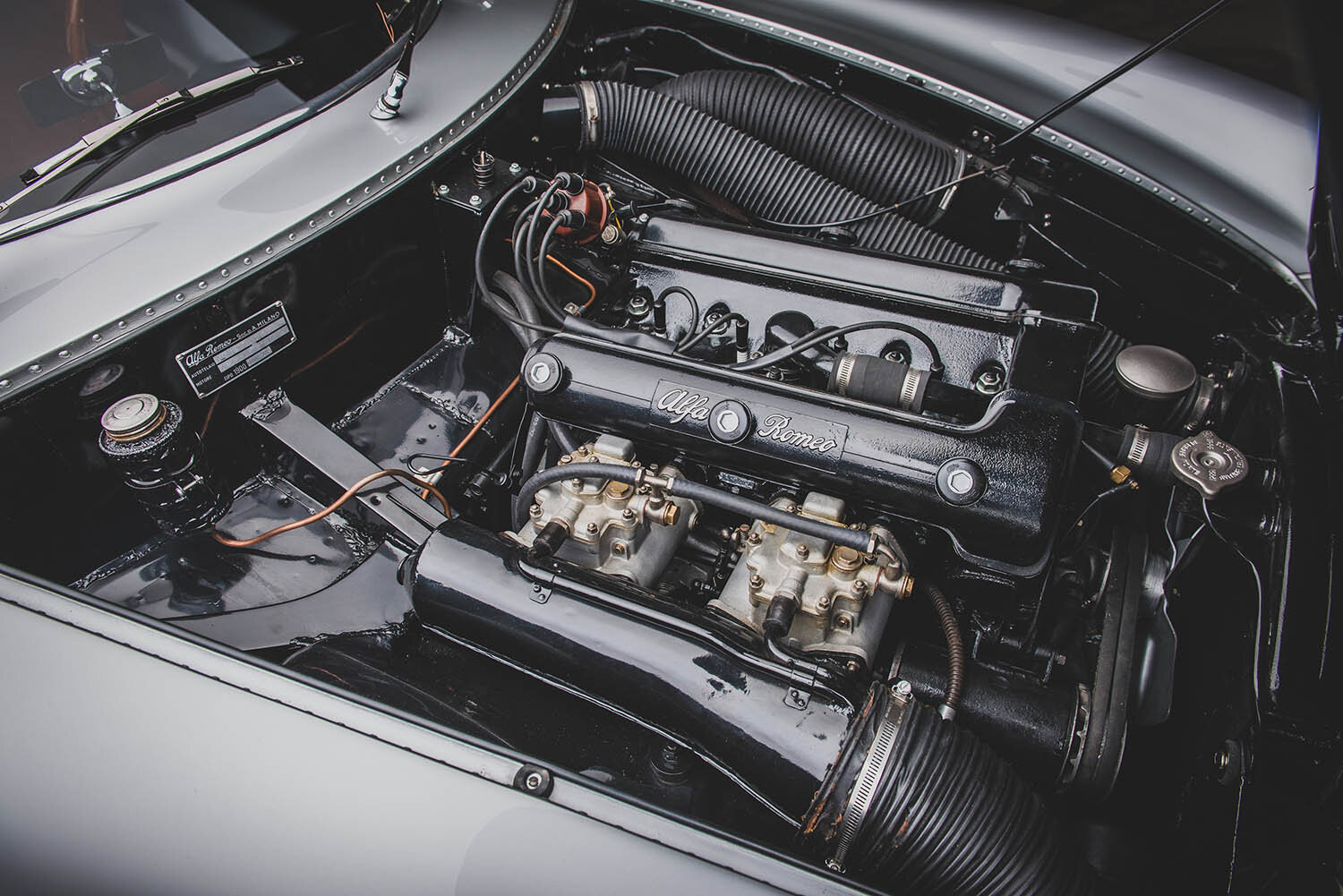Berlina Aerodinamica Tecnica
The Alfa Romeo Berlina Aerodinamica Tecnica Concepts are a trio of incredible automotive and sculptural designs that were penned by Franco Scaglione and executed by Carrozzeria Bertone between 1953 and 1955. Regarded by many as the seminal vehicle designs of the 20th century, B.A.T. 5, 7, & 9 were presented to the public over three consecutive years at the Turin Motor Shows, and have firmly lodged themselves amongst the most spectacular and memorable automotive designs ever produced.
The three cars were more than just design studies and a showcase of what world’s best panel beaters and craftsmen could create; they were also an incredibly effective demonstration of forward-thinking design engineering and advanced aerodynamics. Although designed around modest Alfa Romeo road car chassis, the cars stunned the public with a hitherto unseen blend of sculpture and efficiency, and with more than just a hint of fantasy and science-fiction resonating from each of the three designs.
B.A.T. 5 (1953)
With the first of the B.A.T. concepts, Scaglione set about to produce a visually arresting design that absolutely maximised airflow, and ultimately created a car of spectacular drama. Working with airflow as the essence of how to develop the lines of the vehicle, the completed concept was appropriately dubbed the Berlina Aerodinamica Tecnica 5, or B.A.T. 5.
As with its successors, the running gear was sourced from the Alfa Romeo 1900, but it is a notable fact that the carmaker would remain relatively uninvolved with the design process until the final design, the B.A.T. 9. Output from this four-cylinder engine, mated to a five-speed manual transmission, was approximately 90 horsepower, yet the wind-cheating lines afforded the car a top speed approaching 125 mph. This remarkable performance was thanks to its drag coefficient, calculated at an incredibly low 0.23 Cd - impressive even by today’s standards. It’s pontoon arches, nose vents, wraparound glass cockpit, tapering tailfins and wheel skirts, all combined to produce both aerodynamic efficiency and a design considered to be, almost literally, ‘out of this world’.
B.A.T. 7 (1954)
Having served its purpose, B.A.T. 5 was essentially mothballed after the 1953 show and work commenced on an updated version, soon to be known as the B.A.T. 7. Given the first car’s success, Scaglione was encouraged to emphasize various characteristics of the original, and he obliged by narrowing the front air intakes, lowering the bonnet by over two inches, and lengthening the tailfins while adding increased angular pitch to the extremities. The rear wheel skirts and pronounced side vents remained. The resulting design’s coefficient of drag was, at 0.19 Cd, even more remarkable than its predecessor. This figure is lower than many 21st century super car designs, and this was achieved in 1954 without wind tunnel testing or computer-aided design. A remarkable feat.
B.A.T 9 (1955)
The final of the three cars saw Alfa Romeo take a greater interest in the design process, largely driven by a desire to make the car both stunning visually but also with more consideration given to applying the design for road use. For B.A.T. 9, Scaglione explored a roadworthy gran turismo interpretation of the theme with the fins reduced in size to improve rear visibility, and the rear wheel skirts eliminated. A new pronounced beltline was added toward the rear, while a standard production triangular Giulietta grille, including the famed Milano crest, was fitted to the front grille, highlighting the car’s identity as an Alfa Romeo. Despite this more practical approach to the design, the result proved to be the crescendo of the design iteration and was much admired for its jet-age design that perfectly combined both form and function.
The three Alfa Romeo Berlina Aerodinamica Tecnica (B.A.T.) Concepts will be auctioned as one single lot at Sotheby’s Contemporary Art Evening Sale in New York on 28th October 2020. For more details, click on the link below. Photos: Darin Schnabel © 2020 RM Sothebys.





